This site uses affiliate links, meaning that if you make a purchase through our links, we may earn an affiliate commission.
If you have a week to spare, I have some fantastic suggestions for how you can make the most of your time in Egypt!
This carefully crafted 7-day Egypt itinerary will whisk you away to some of the most awe-inspiring sites the country has to offer. Prepare to be captivated by the legendary Pyramids of Giza, delve into the exquisitely adorned tombs of the Valley of the Kings, marvel at the grandeur of Karnak and Luxor Temples in Luxor, and stand in awe of the magnificent temples at Abu Simbel.
But the adventure does not stop there; it continues with a thrilling sunrise hot air balloon excursion over Luxor and a visit to the ancient pyramids in Dahshur and Saqqara.
This 7-day Egyptian journey promises an unending series of unforgettable experiences.
Rest assured, once you’ve completed this extraordinary itinerary, you will be eagerly planning your return to Egypt, eager to delve deeper into the wonders of this incredible destination.
- 1. Essential Travel Tips for Your Egypt Adventure
- 2. Day 1 - Arrival in Cairo
- 3. Day 2 - Memphis, Saqqara, and the Pyramids of Giza
- 4. Day 3 - Aswan, Temple of Philae on Agilkia Island, Aswan High Dam, Abu Simbel Temple Complex, River Nile Cruise
- 5. Day 4 - Temple of Kom Ombo, Crocodile Mummy Museum, Temple of Horus at Edfu
- 6. Day 5 - Sunrise Hot Air Balloon Ride, Valley of the Kings, Temple of Hatshepsut, Colossi of Memnon
- 7. Day 6 - Disembark River Nile Cruise, Check into Your Hotel, Luxor and Karnak Temples, Sound and Light Show at the Karnak Temple
- 8. Day 7 - Flight Back to Cairo, Islamic and Coptic Cairo, Egyptian Museum, Khan el-Khalili Bazaar, Flight Back Home
- 9. Intrepid Scout's Tips for 7-Day Egypt Itinerary
Essential Travel Tips for Your Egypt Adventure
Exploring Egypt may pose challenges, even to the most experienced travelers.
Navigating the intricacies of Egypt requires careful consideration and knowledge before embarking on your journey.
I have compiled a vital list of 14 essential Egypt travel tips to enhance your experience, circumvent potential hurdles, and guarantee a secure and delightful visit to this captivating country.
Before setting foot in Egypt, be sure to peruse our comprehensive guide, 14 Egypt Travel Tips to Enhance Your Experience, Save You Money, and Ensure Your Safety.
Discover:
- Is It Safe to Travel to Egypt
- When Should You Go to Egypt
- Will You Need a Visa to Travel to Egypt
- Should You Hire a Tour Company
- What Should You Wear
- Is It Safe to Drink Tap Water
- What You Need to Know About Tipping in Egypt
- Do You Need to Exchange Money
- How to Get Around in Egypt
- Can You Fly a Drone
- How to Bargain in Egypt
- Should You Go on a Camel Ride
- How to Use Public Toilets in Egypt
- What to See in Egypt for First-Time Visit
Day 1 - Arrival in Cairo
As you commence your 7-day Egypt adventure, your initial destination will be Cairo.
Depending on your flight’s arrival time, I recommend a leisurely start to your journey. Check into your hotel, prepare for the exciting days ahead, take time to relax, and ensure you enjoy a restful night’s sleep.
Where to Stay in Cairo
In Cairo, you’ll find a plethora of exceptional hotels, but selecting one in Giza, near Cairo, with a breathtaking view of the pyramids, can truly elevate your Egyptian experience.
My top recommendation is the Marriott Mena House, where I had the pleasure of staying and was thoroughly impressed.
Nestled on 40 acres of meticulously manicured gardens, the Marriott Mena House is a gem situated less than half a mile from the Pyramids of Giza.
Everywhere you turn on the property, you are treated to awe-inspiring views of the pyramids.
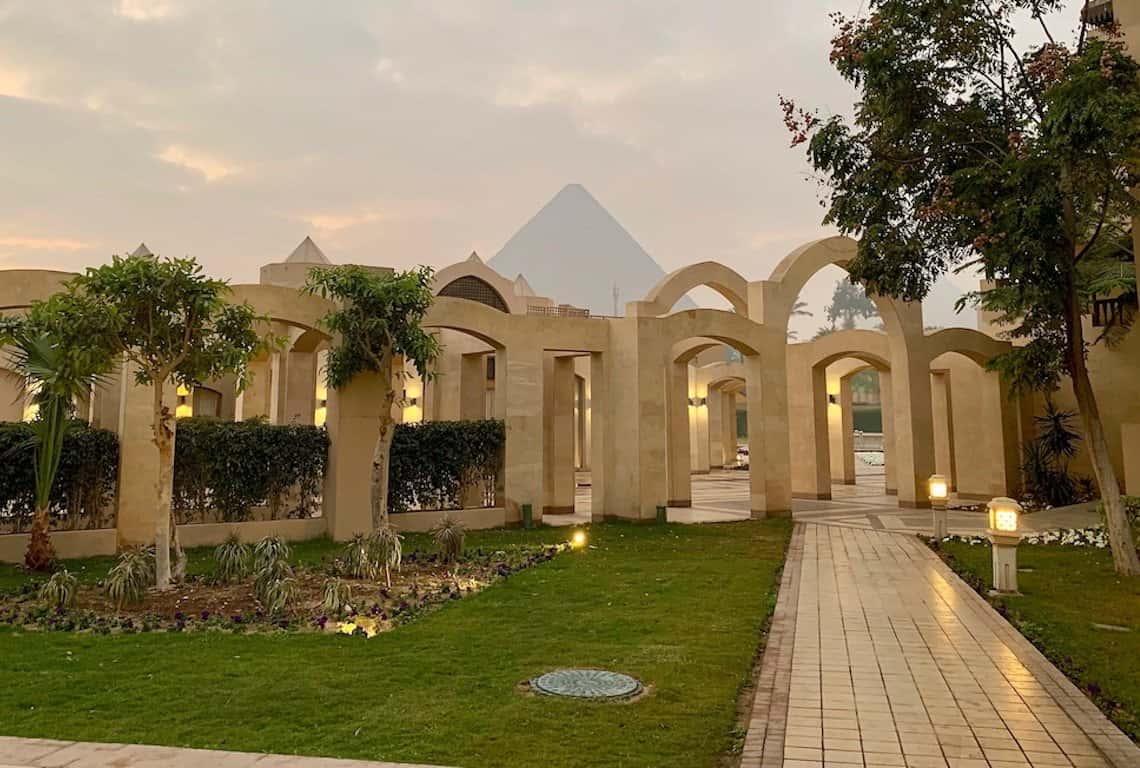
Marriott Mena House / 7-Day Egypt Itinerary
Additionally, the hotel offers a range of amenities, including a spa, fitness center, and a serene pool.
The rooms at Marriott Mena House are generously proportioned and elegantly appointed. Each room is equipped with modern conveniences like air conditioning, a flat-screen TV, a private seating area, and a host of other amenities, including plush and comfortable slippers for your leisure.
One of the highlights of your stay will undoubtedly be the sumptuous buffet breakfast. Every morning, you can savor a wide array of delectable options presented with the utmost care and attention to detail.

Marriott Mena House / 7-Day Egypt Itinerary
PRO TIP: I highly recommend enjoying your breakfast on the patio, where you can soak in the magnificent view of the Pyramids in the distance – a perfect way to start your day.
Above all, what truly sets Marriott Mena House apart is its exceptional customer service. The staff goes above and beyond to ensure your stay is nothing short of perfection, adding an extra layer of delight to your Egyptian adventure.
Day 2 - Memphis, Saqqara, and the Pyramids of Giza
Welcome to the second day of your captivating 7-day Egypt itinerary, where today’s journey will lead you to the historic sites of Memphis, Saqqara, and the iconic Pyramids of Giza.
PRO TIP: Begin your day by visiting Memphis and Saqqara, reserving your Pyramids of Giza exploration for the afternoon. This strategic timing is especially beneficial during the fall/spring and winter months when the morning often brings a slight haze or fog that can obscure the majesty of the Pyramids. By waiting until the afternoon, you will enjoy clearer, more breathtaking views of these ancient wonders.
Embark on the approximately 45-minute journey from the Marriott Mena House in Giza to Memphis, during which you will catch a glimpse of the bustling city of Cairo and its renowned, albeit hectic, traffic.
Memphis
Memphis serves as a remarkable initiation point for your Egyptian adventure!
Established around 3100 BC, Memphis holds the distinction of being the inaugural capital of the unified kingdom of Upper and Lower Egypt—a pivotal moment in the nation’s history.
Although it was eventually abandoned in the 7th century AD, Memphis endures as a vital archaeological site, drawing history enthusiasts from across the globe.
The majority of its priceless artifacts are thoughtfully displayed in the Memphis Open Air Museum, providing visitors with an immersive glimpse into Egypt’s rich past.
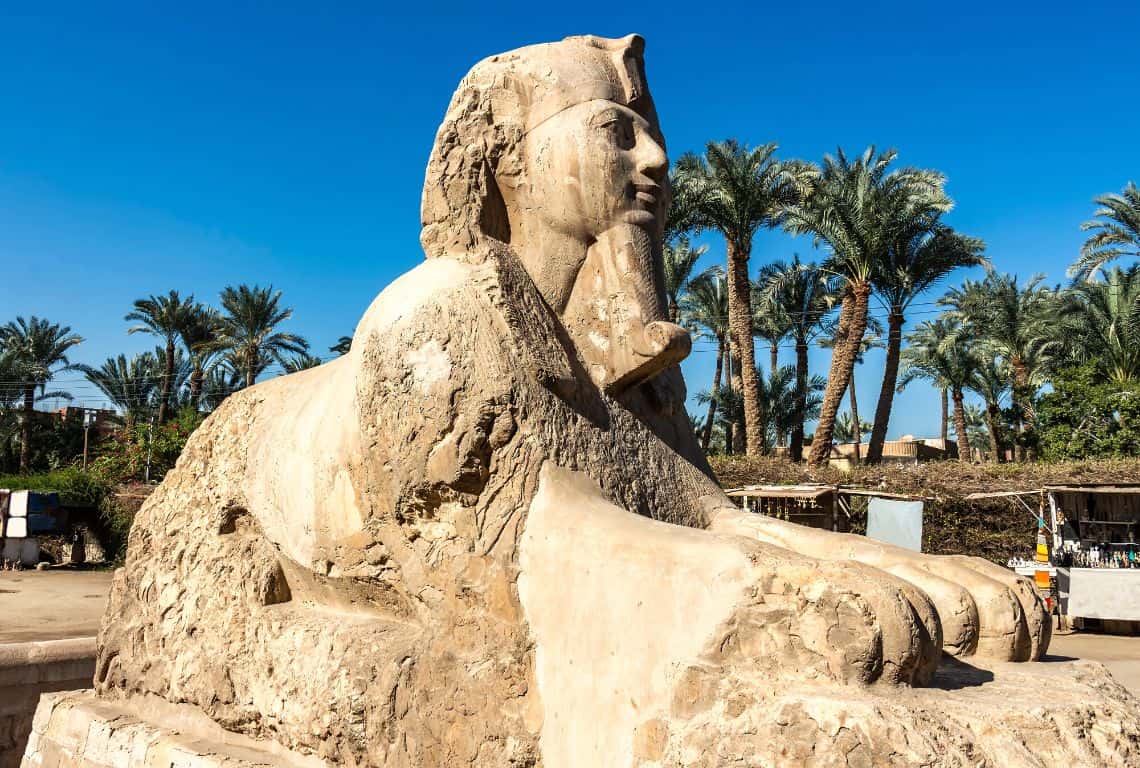
Memphis / 7-Day Egypt Itinerary
Within the grounds, you will also find an indoor museum housing a true masterpiece—the fallen colossal limestone statue of Ramses II.
For many, myself included, this sculpture stands as the pinnacle of the Memphis experience. The sheer grandeur and intricate details of Ramses II’s likeness are a sight to behold, and one must witness it firsthand to fully appreciate its magnificence.
It is a mesmerizing testament to the artistry and craftsmanship of ancient Egypt. Do not miss the opportunity to encounter this awe-inspiring piece of history during your visit to Memphis.
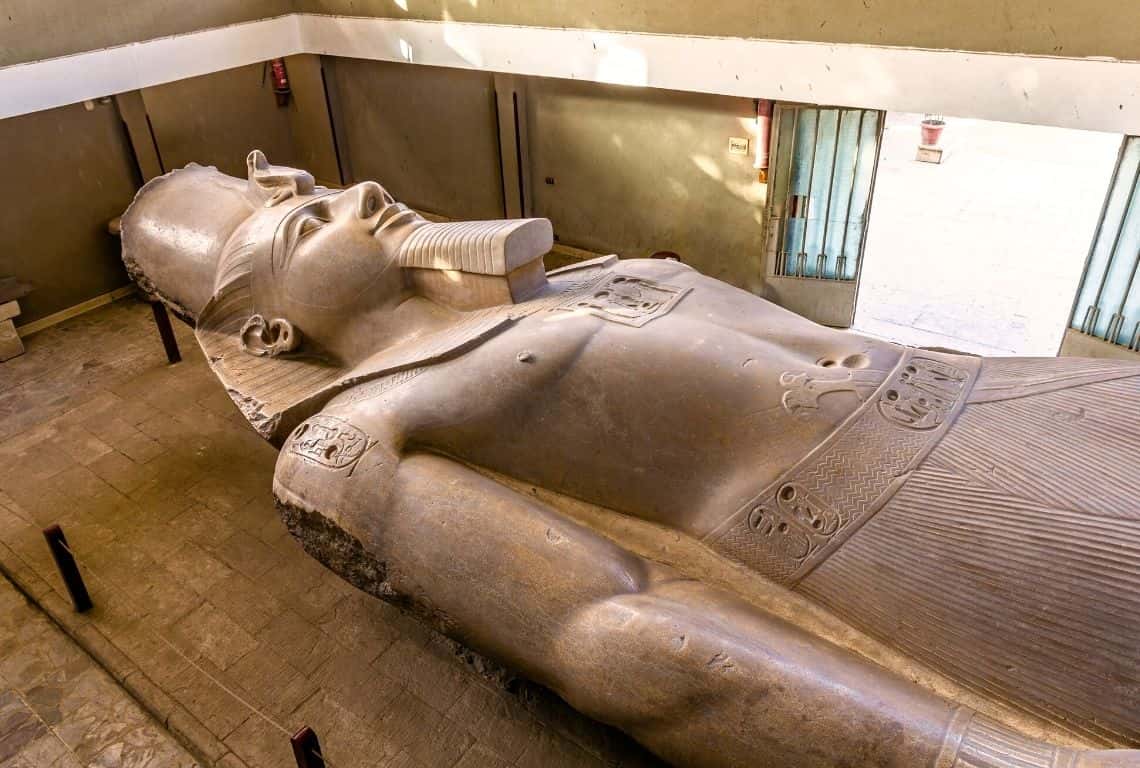
Memphis / 7-Day Egypt Itinerary
Saqqara
Our next stop brings us to Saqqara, also spelled as Sakkara or Saccara in English, a sprawling necropolis that once served as the sacred burial grounds for the ancient capital city of Memphis. It holds an esteemed place in history as the birthplace of pyramid construction in Egypt.
The crown jewel of Saqqara is the world-renowned Step Pyramid of Djoser, a monumental achievement in architecture.
This extraordinary structure, crafted under the visionary guidance of Imhotep, marks not only the inaugural pyramid in Egypt but also holds the esteemed title of being the world’s oldest surviving stone building. Its construction unfolded between 2630 and 2611 BC, a testament to the ancient Egyptians’ architectural prowess.
Soaring to a height of 60 meters (204 feet), the Step Pyramid of Djoser is composed of six imposing steps, each symbolizing an architectural marvel of its time.
Surrounding the Step Pyramid, you will find an elaborate funerary complex encompassing temples, courtyards, shrines, and living quarters for the revered priests who tended to this sacred site.
Saqqara stands as a testament to the enduring legacy of ancient Egypt’s architectural ingenuity and spiritual devotion.
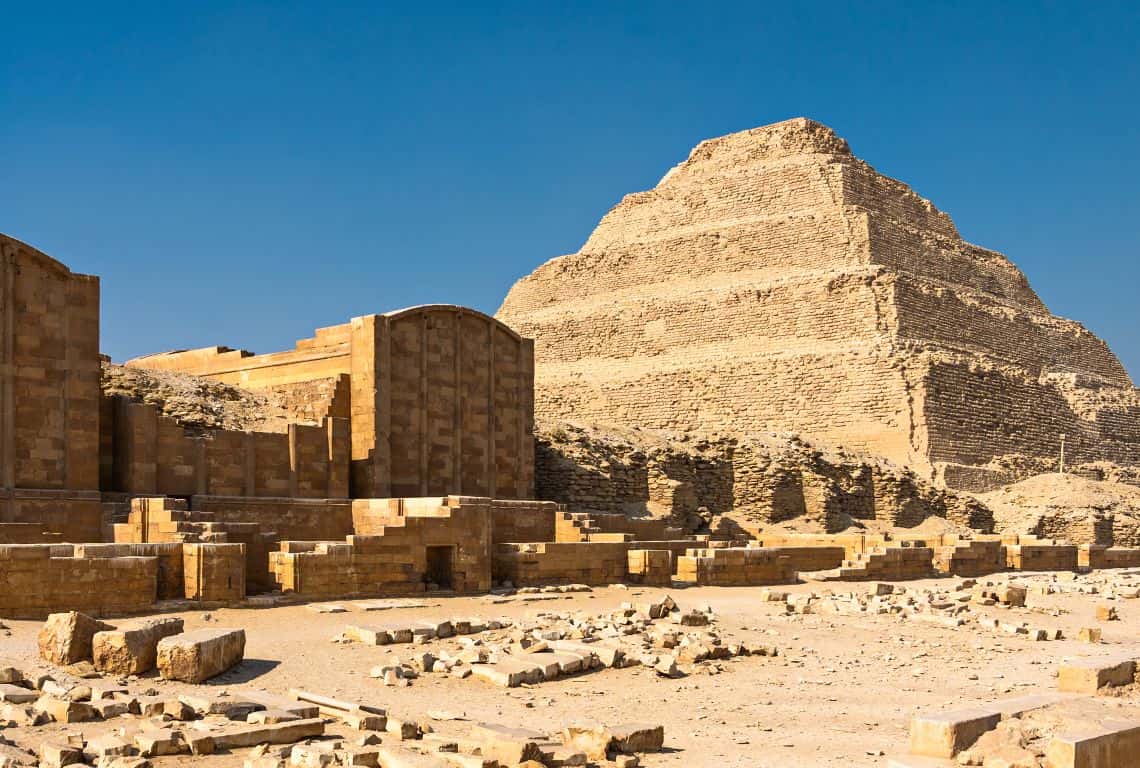
Saqqara / 7-Day Egypt Itinerary
The Pyramids of Giza
Now, on your meticulously planned 7-day Egypt itinerary, we arrive at the awe-inspiring Pyramids of Giza.
Standing as the most magnificent and iconic structures globally, the Pyramids of Giza are the undisputed stars of the show!
They constitute the heart of the Giza Pyramid Complex, alternatively known as the Giza Necropolis. Within this sprawling complex, you will encounter the Great Pyramid of Giza, recognized as the Pyramid of Khufu or the Pyramid of Cheops, along with the Pyramid of Khafre, the Pyramid of Menkaure, the enigmatic Great Sphinx of Giza, the intriguing “Queens” Pyramids, and the enlightening Solar Boat Museum.
Without a doubt, the pyramid complex is vast and can be overwhelming. To help you make the most of your visit, here are four absolute must-do and must-see experiences at the Pyramids of Giza:
- Panoramic Spot: Ascend to the Panoramic Spot for an unrivaled view of the Pyramid Complex. This vantage point offers a breathtaking perspective on these ancient wonders.
- Camel or Carriage Ride: Embrace the classic charm of a camel ride around the Pyramids, or opt for a leisurely horse-drawn carriage ride to explore the complex in style.
- Solar Boat Museum: Delve into history by visiting the Solar Boat Museum, where you can marvel at the well-preserved ancient vessels that once carried pharaohs on their celestial journeys.
- Great Pyramid Exploration: Venture inside the Great Pyramid of Giza, a journey into the heart of ancient mysteries. Explore the inner chambers and corridors of this architectural marvel to truly immerse yourself in Egypt’s enigmatic past.
These four experiences will not only enrich your visit but also provide a deeper understanding of the enduring allure of the Pyramids of Giza: 10 Epic Things to See and Do at the Pyramids of Giza
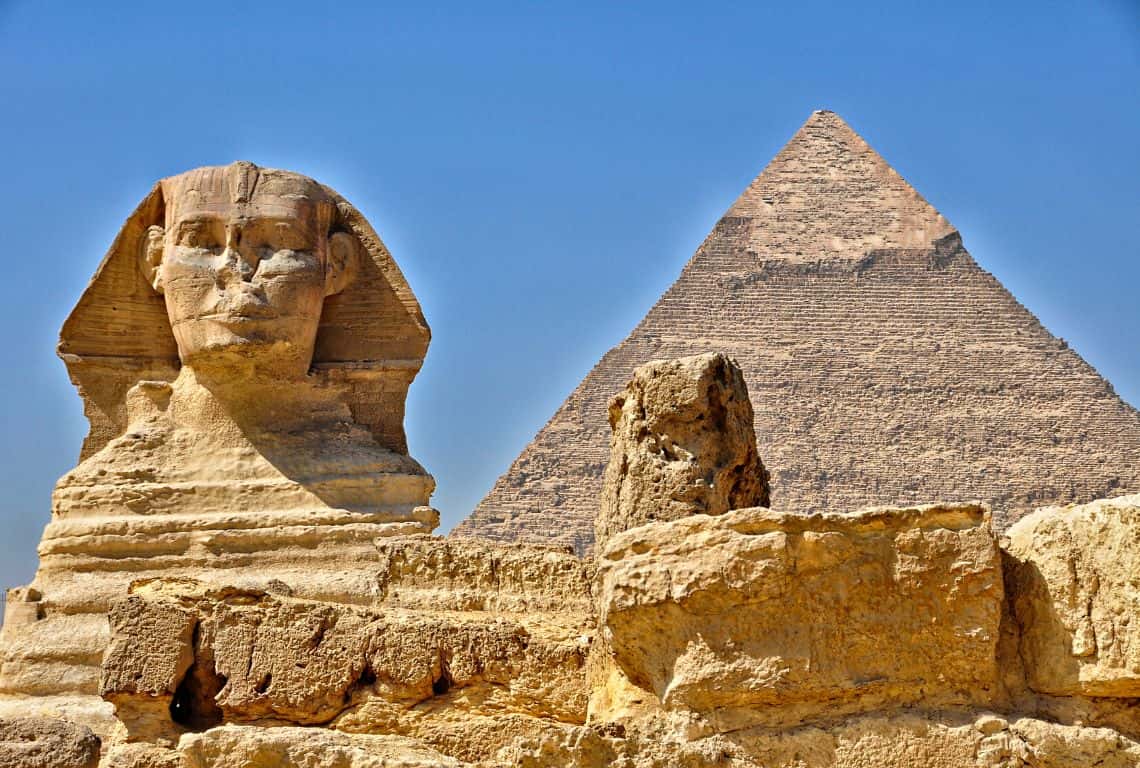
Pyramids of Giza / 7-Day Egypt Itinerary
The visit to the Pyramids of Giza concludes the second day of the 7-day Egypt itinerary. My suggestion is to head back to your hotel and get some rest. If you decide to stay at Marriott Mena House, then have dinner at 139 Restaurant at the hotel with the pyramids as the backdrop.
If you are still up to more exploring and you are looking for things to do at night in Cairo, then catch the Sound and Light Show at the Great Pyramid Complex. You will be able to see the pyramids beautifully illuminated.
Day 3 - Aswan, Temple of Philae on Agilkia Island, Aswan High Dam, Abu Simbel Temple Complex, River Nile Cruise
On this day, following your hotel check-out, your journey will take you to the airport, where you will board an early flight bound for Aswan.
Upon arriving in Aswan, prepare to be captivated by the stunning Temple of Philae, nestled on the picturesque Agilkia Island.
A brief stop to marvel at the Aswan High Dam will follow before you proceed to witness the awe-inspiring Abu Simbel Temples.
To culminate this day of exploration, you will embark on a memorable River Nile Cruise, setting the stage for further enchantment and discovery along this legendary waterway.
Flight from Cairo to Aswan
The flight duration from Cairo to Aswan is approximately one hour. Nevertheless, it’s crucial to note that arriving at the airport at least three hours before your flight is strongly recommended.
During my experience, airport security checks were a time-consuming process with long queues and limited organization.
Upon landing in Aswan, I was warmly greeted by my tour guide, who was patiently waiting at the airport. He promptly ushered me to a waiting vehicle driven by a skilled chauffeur, and we swiftly embarked on our journey to the enchanting Temple of Philae on Agilkia Island.
Temple of Philae on Agilkia Island
The journey from Aswan Airport to Marina Philae Temple, a short 15-20 minute drive with my driver and tour guide, marked the start of my Philae Island adventure. From there, a delightful small boat ride transported us to Agilkia Island, the home of the Temple of Philae.
The Temple of Philae on Agilkia Island is an absolute must-visit when exploring Egypt. Its architectural treasures span across eras, from the reign of the Pharaohs to the times of the Caesars, making it an unparalleled historical gem.
Notably, Philae Island is steeped in myth and legend, believed to be one of the resting places of Osiris, a key figure in Egyptian mythology.
Additionally, the temple on Philae was dedicated to the revered goddess Isis, the beloved wife of Osiris and the nurturing mother of Horus.
Over the ages, the Temple of Philae garnered veneration, from the Ptolemaic Kingdom to the Aegyptus period, and even through the Coptic era. Pilgrims from far and wide across the Mediterranean would embark on journeys to pay homage to the goddess Isis at this sacred site.
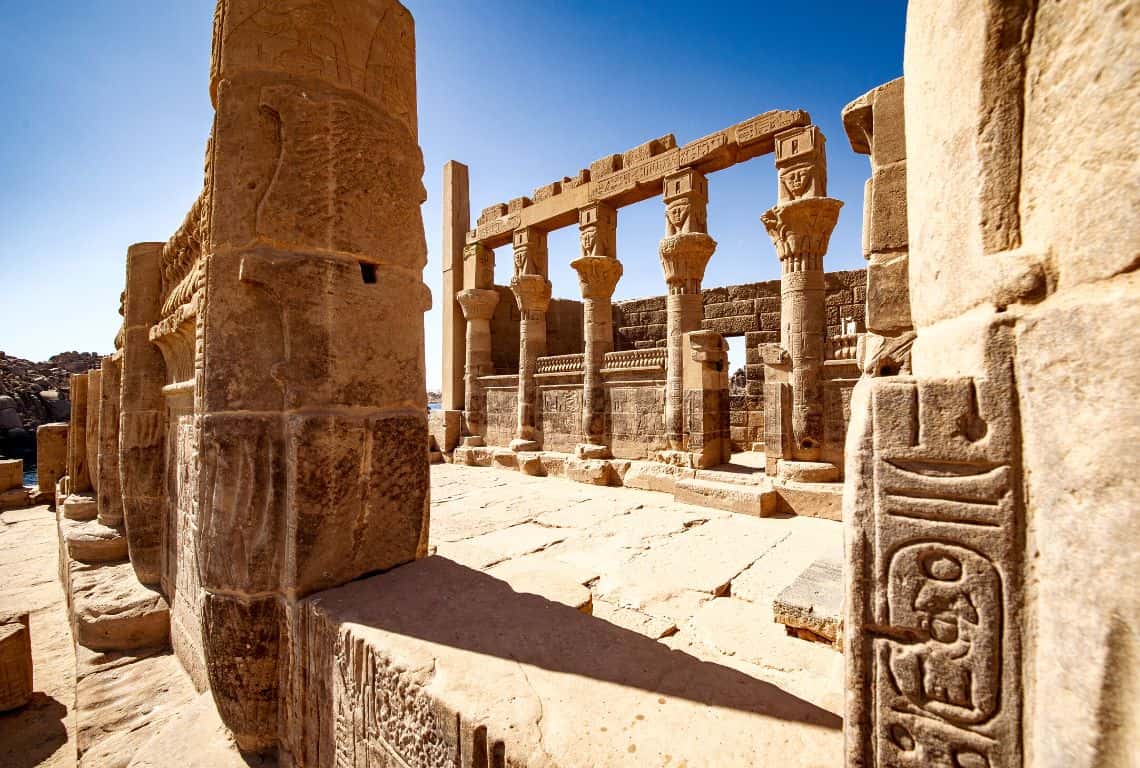
Temple of Philae / 7-Day Egypt Itinerary
Among the captivating structures on the island, my personal favorite was the grand Kiosk of Trajan, often referred to as Pharaoh’s Bed. This architectural marvel features 14 imposing columns adorned with intricately carved floral capitals, a testament to the artistic prowess of its time.
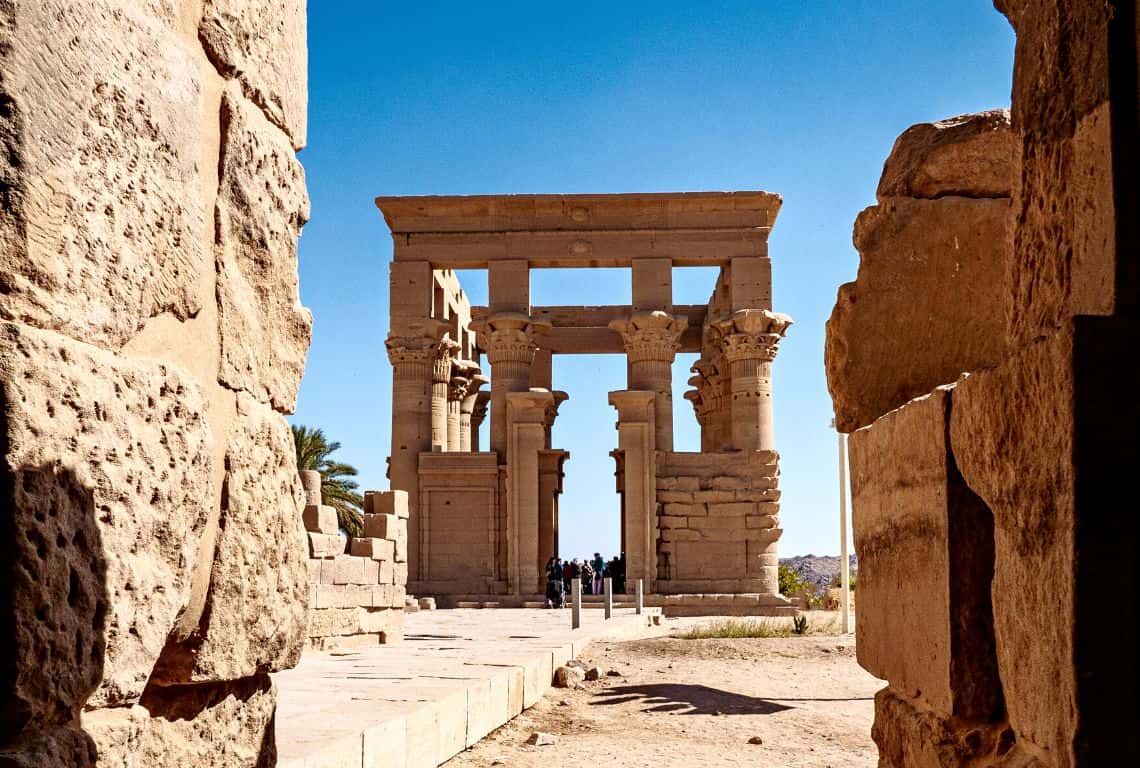
Temple of Philae / 7-Day Egypt Itinerary
However, the zenith of your visit awaits at the Sanctuary of the Temple of Isis. Nestled within, you’ll encounter a pedestal that once cradled the statue of the goddess Isis, as well as a sacred barque in which she embarked on her journeys.
This sanctuary stands as a profound symbol of devotion and reverence, a truly mesmerizing piece of ancient history.
Aswan High Dam
Our next destination on the itinerary is the remarkable Aswan High Dam.
The construction of the Aswan High Dam commenced in 1960 and reached completion in 1970, marking a monumental engineering feat.
This colossal structure ranks among the largest embankment dams globally, holding back an astounding 132 cubic kilometers (31.7 cubic miles) of water in the expansive Lake Nasser.
Beyond its sheer size, the Aswan High Dam has had a profound impact on the region. It effectively eliminated the annual cycle of devastating floods and crippling droughts, ushering in an era of stability and control over the Nile’s waters.
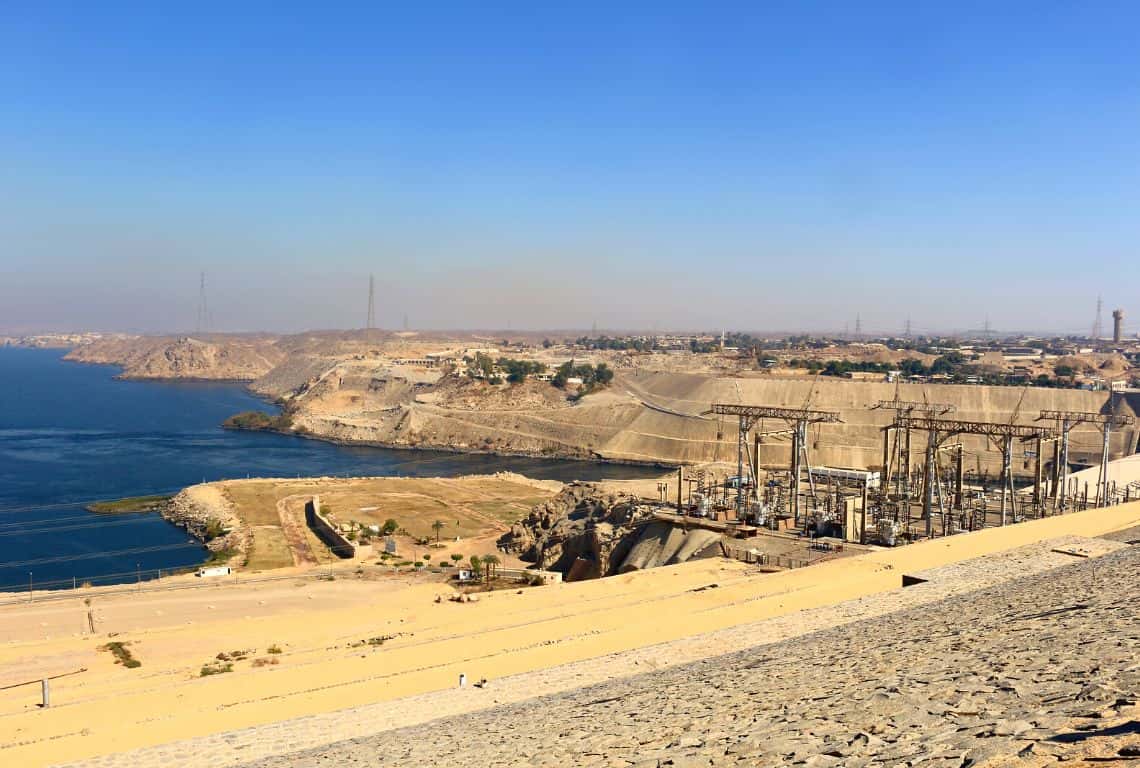
Aswan High Dam / 7-Day Egypt Itinerary
Moreover, the dam facilitated the reclamation of vast expanses of arid desert land, transforming them into fertile grounds for cultivation, and thereby bolstering agricultural production.
The Aswan High Dam’s 12 formidable turbines stand as a powerhouse of energy generation, capable of producing a staggering 10 billion kilowatt-hours annually, a testament to its vital role in Egypt’s energy infrastructure.
Remarkably, the dam’s financing was a collaborative effort, funded through Soviet loans and the proceeds derived from the operation of the Suez Canal, marking a confluence of international resources and contributions in its realization.
Abu Simbel Temple Complex
Undoubtedly, one of the absolute must-see marvels during your visit to Egypt is the extraordinary Abu Simbel Temple Complex.
Situated 287 kilometers (178 miles) southwest of Aswan, reaching these magnificent temples entails a roughly three-hour journey. The time spent on the road is a mere prelude to the sheer wonder that awaits, and it will undoubtedly stand as the highlight of your Egyptian sojourn.
For my expedition to Abu Simbel, my tour company thoughtfully arranged transportation, providing me with both a skilled driver and an informative tour guide. During the entire three-hour drive, I engaged in enlightening conversations with my guide, delving into the rich history of the Abu Simbel Temples and the captivating tale of Egypt. Before I knew it, we had arrived at the awe-inspiring Abu Simbel Temple Complex.
This remarkable complex consists of two temples, each hewn meticulously from solid rock.
The first, the Great Temple, was constructed in honor of the mighty Ramses II, and its facade is nothing short of awe-inspiring. Stretching 35 meters (115 feet) in length and towering 30 meters (98 feet) into the sky, it commands immediate attention.
At its entrance stand four colossal statues of Ramses II, each an astounding 20 meters (65 feet) in height.
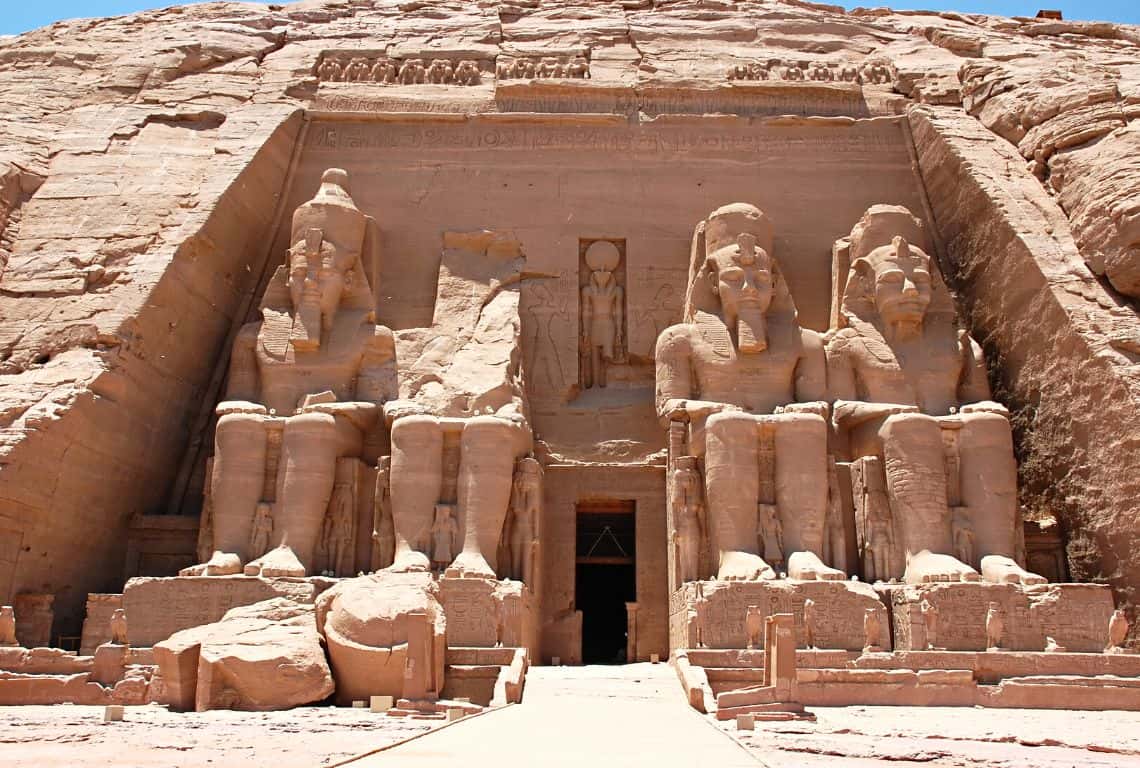
Abu Simbel Temples / 7-Day Egypt Itinerary
Upon entering the temple, one is greeted by the grandeur of four towering pillars on each side, each graced with imposing statues of Ramses II, reaching an impressive 10 meters (33 feet) in height.
What truly sets the Great Temple of Abu Simbel apart is its meticulous alignment with the sun’s path. On two remarkable days of the year, February 22 and October 22, sunlight penetrates a staggering 55 meters (180 feet) into the temple’s inner sanctum, illuminating three of the four seated statues.
Adjacent to this magnificent edifice stands the Small Temple, commissioned by Ramses II in homage to his beloved wife, Nefertari, and dedicated to the goddess Hathor. Its facade boasts six towering statues, depicting Queen Nefertari as the goddess Hathor alongside Ramses II.
Upon entering the Small Temple, you’ll find yourself in a spacious hall supported by six stately pillars, each crowned with the visage of the goddess Hathor. The walls are adorned with intricately carved scenes, illustrating Ramses II and Queen Nefertari presenting offerings to various Egyptian deities, an artistic treasure trove of history and devotion.
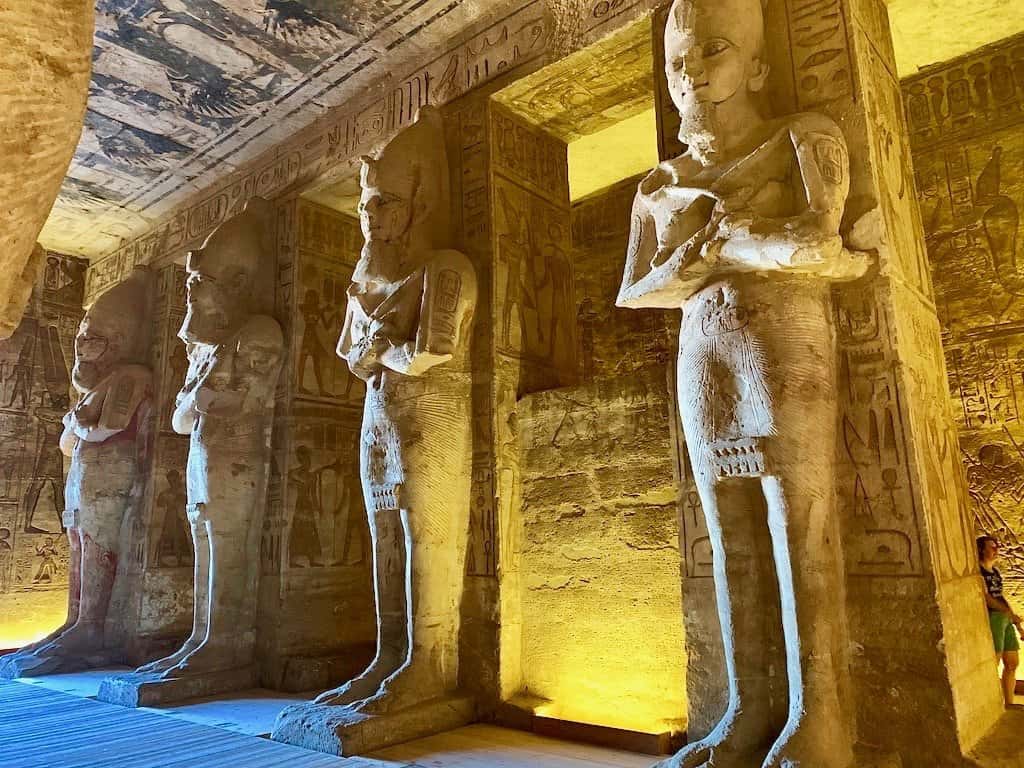
Abu Simbel Temples / 7-Day Egypt Itinerary
Adjacent to this magnificent edifice stands the Small Temple, commissioned by Ramses II in homage to his beloved wife, Nefertari, and dedicated to the goddess Hathor.
Its facade boasts six towering statues, depicting Queen Nefertari as the goddess Hathor alongside Ramses II.
Upon entering the Small Temple, you will find yourself in a spacious hall supported by six stately pillars, each crowned with the visage of the goddess Hathor.
The walls are adorned with intricately carved scenes, illustrating Ramses II and Queen Nefertari presenting offerings to various Egyptian deities, an artistic treasure trove of history and devotion.
Board River Nile Cruise
Following my captivating visit to the Abu Simbel Temple Complex, I returned to Aswan, where I embarked on the Livingston Cruise Ship.
My travel arrangements included booking this cruise ship through my travel agency, which had touted it as a luxurious 5-star vessel. However, while I found it to be comfortable and well-maintained, I must admit that it did not quite live up to my expectations of a true 5-star luxury cruise ship.
Day 4 - Temple of Kom Ombo, Crocodile Mummy Museum, Temple of Horus at Edfu
Welcome to day 4 of your meticulously planned 7-day Egypt itinerary!
Today, your adventure begins with an early morning disembarkation from your cruise ship. Your first stops will be the fascinating Temple of Kom Ombo and the intriguing Crocodile Mummy Museum.
Following this, you will resume your leisurely cruise along the majestic River Nile, eventually reaching the historic city of Edfu. There, you will have the opportunity to explore the awe-inspiring Temple of Horus, an iconic site steeped in history and myth.
Visit the Temple of Kom Ombo and the Crocodile Mummy Museum
PRO TIP: Commence your day with an early start, heading straight for the Temple of Kom Ombo. By doing so, you not only evade the crowds but also bask in the serene beauty of the temple bathed in the soft morning light.
My rendezvous with my guide took place in the cruise ship’s lobby at 6 a.m., and we strolled over to the temple together. To my delight, we found ourselves in splendid isolation, granting me the privilege of capturing some stunning photographs in the tranquil ambiance.
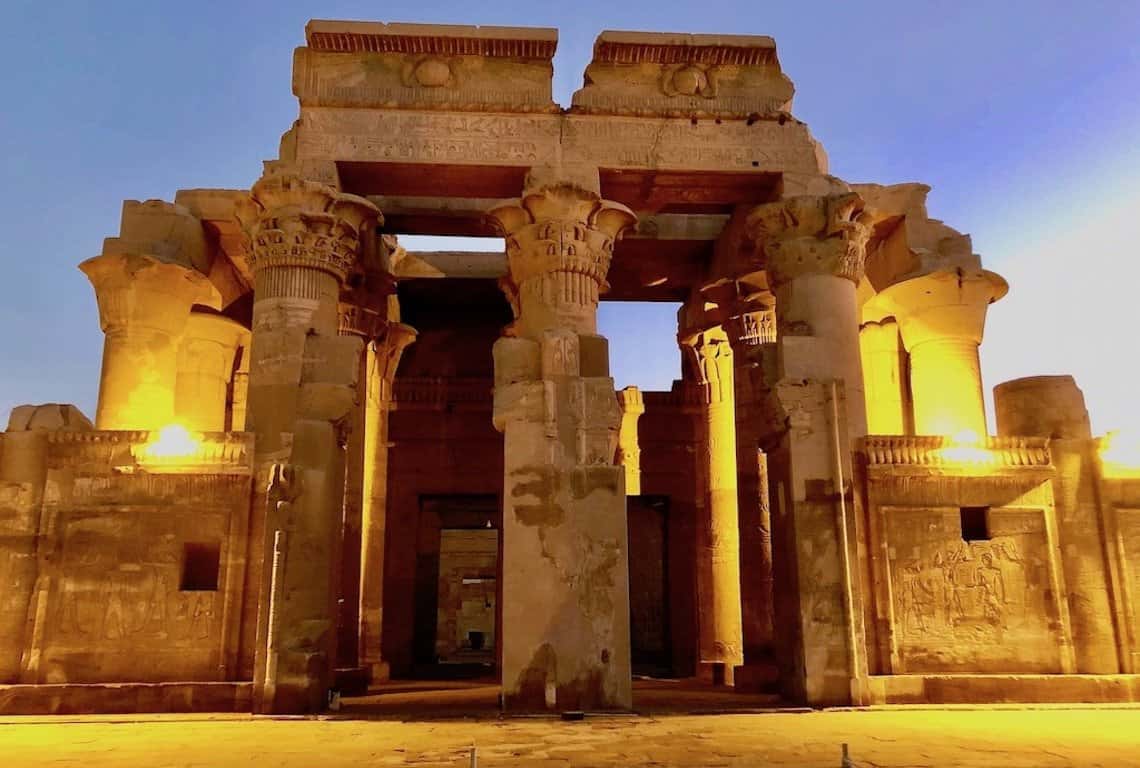
Temple of Kom Ombo / 7-Day Egypt Itinerary
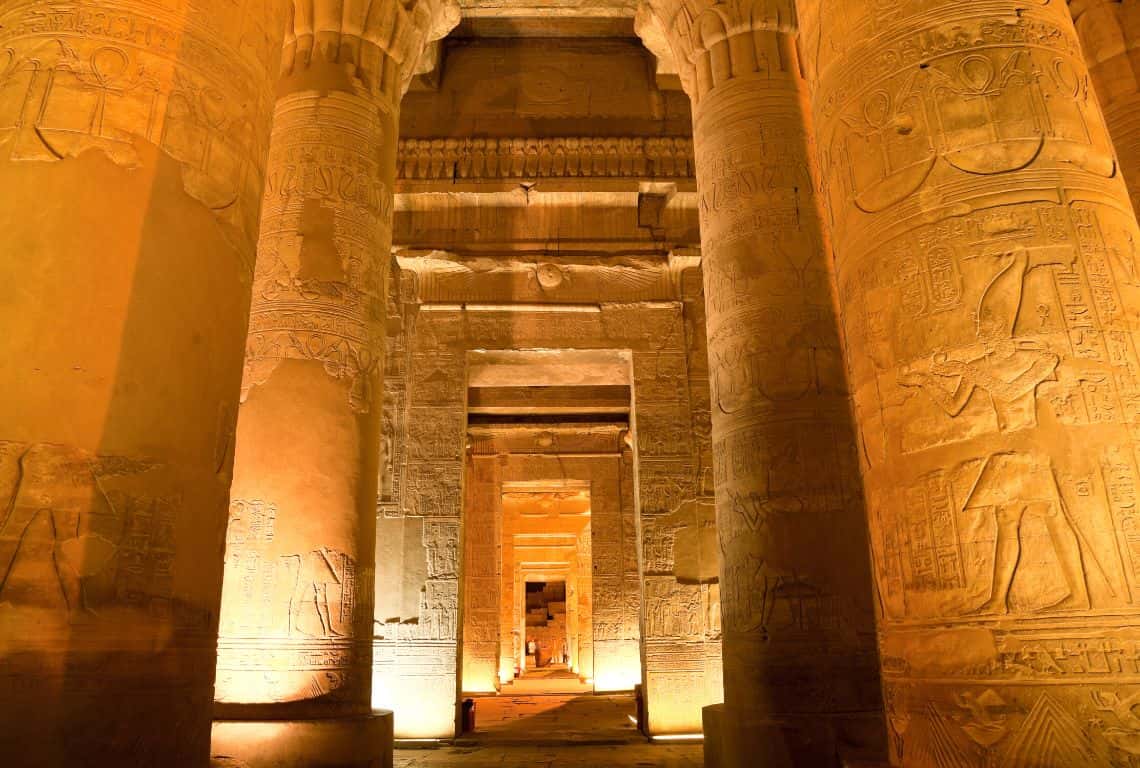
Temple of Kom Ombo / 7-Day Egypt Itinerary
While exploring the Temple of Kom Ombo, make certain not to overlook the remarkable relief depicting the ancient Egyptian calendar and the depiction of medical and surgical instruments—possibly intertwined with ritualistic significance. This particular relief is believed to be the earliest representation of instruments related to medicine.
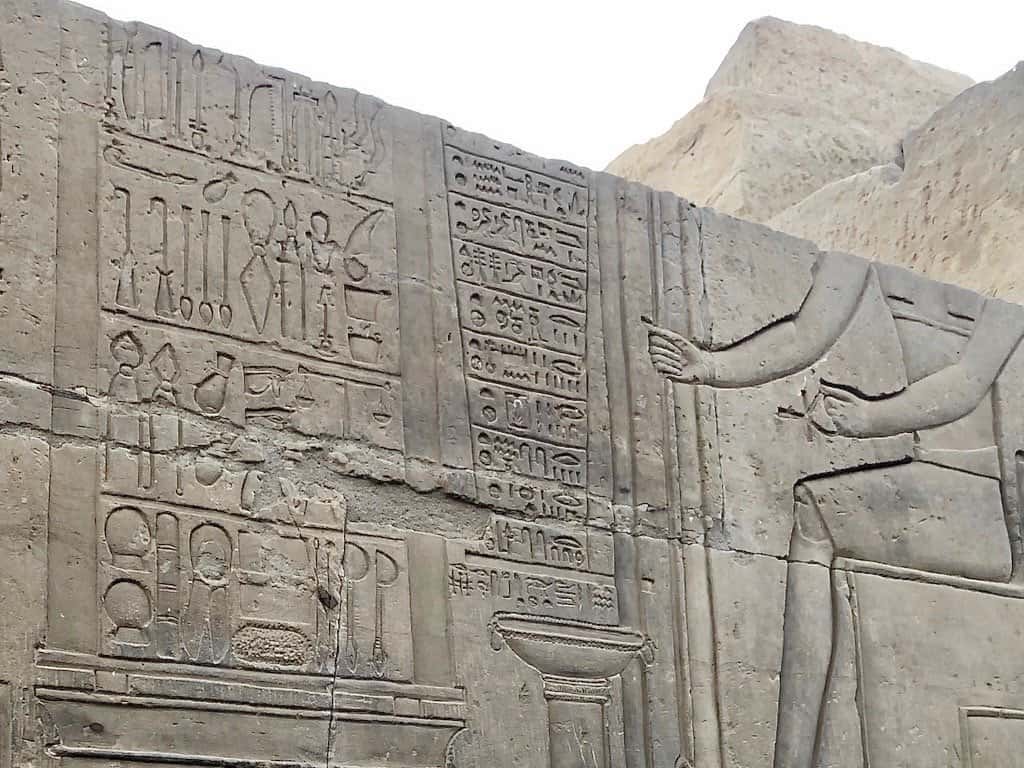
Temple of Kom Ombo / 7-Day Egypt Itinerary
After immersing yourself in the treasures of the Temple of Kom Ombo, make a point to visit the Crocodile Mummy Museum.
This unique establishment holds a wealth of captivating exhibits, including an array of crocodile mummies spanning various ages and sizes, mummified crocodile eggs, and intriguing offerings left by pilgrims.
Moreover, you will delve into the fascinating lore surrounding the crocodile god Sobek, the deity of the Nile, and the creator of the world. It is an enthralling exploration of both history and mythology.

The Crocodile Mummy Museum / 7-Day Egypt Itinerary
Following your captivating visit to the Temple of Kom Ombo and the Crocodile Mummy Museum, return to your cruise ship for a well-deserved breakfast.
Once you have replenished your energy, I recommend seeking out a serene spot on the deck of your ship to savor the picturesque surroundings. Before long, you will find yourself passing by Gebel el-Silsila, a site of historical significance.
Gebel el-Silsila holds a unique place in the journey as it signifies the transition point where the bedrock changes from limestone to sandstone. This geological shift played a crucial role in ancient times when enormous quantities of sandstone were quarried here, making it an invaluable resource for construction and architecture.
Moreover, Gebel el-Silsila held profound religious importance. Annually, at the onset of the inundation season, pilgrims flocked to this site to offer sacrifices and pay homage to various deities, seeking blessings for a prosperous year ahead.
It is a fascinating glimpse into the religious and geological history of this region.
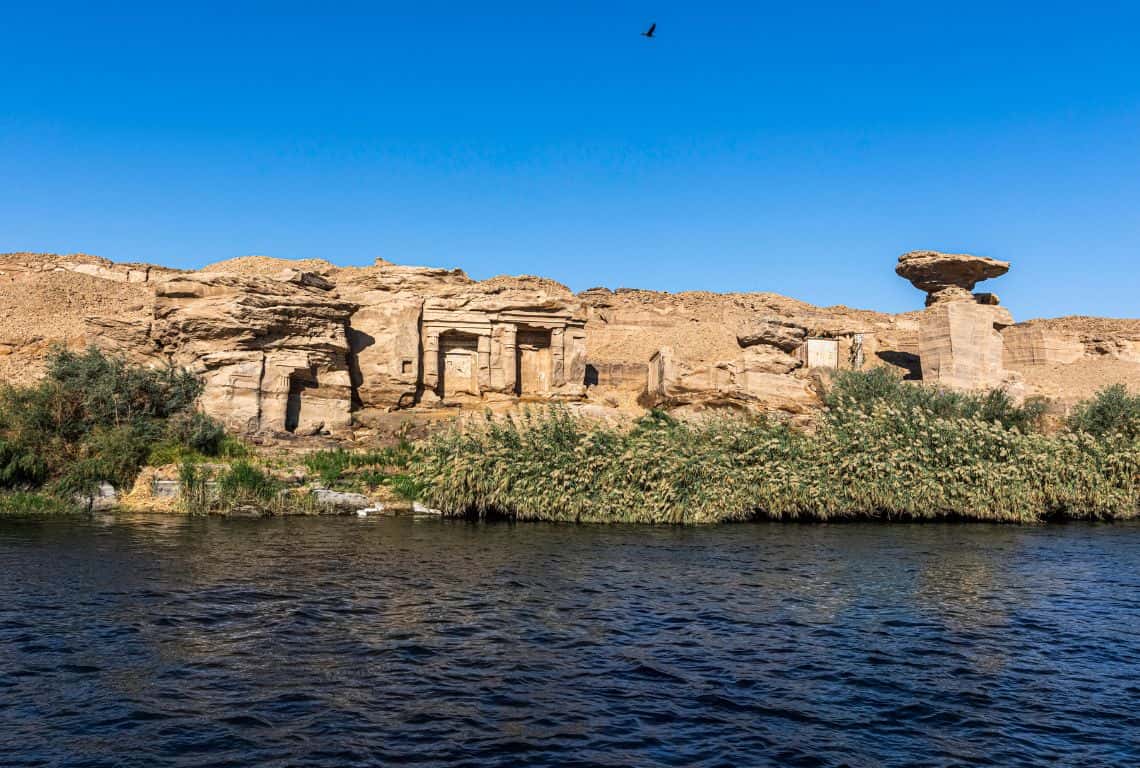
Gebel el-Silsila / 7-Day Egypt Itinerary
Visit the Temple of Horus at Edfu
Our final destination for the day brings us to the illustrious Temple of Horus at Edfu.
I learned from my guide that the sole means of reaching the Temple of Horus at Edfu from the cruise boat is by way of a charming horse-drawn carriage. The roads leading to this ancient marvel are so narrow that they cannot accommodate vans or buses, making horse-drawn carriages the exclusive mode of tourist transportation. And so, we embarked on our journey in one of these delightful carriages.
Renowned as the most intact and meticulously preserved ancient temple structure in Egypt, the Temple of Horus at Edfu stands as a testament to the craftsmanship of antiquity. This magnificent temple is dedicated to Horus, the god with the falcon-headed visage.
Upon passing through an impressive pylon, you will find yourself within a stunning courtyard, encircled on three sides by a covered colonnade boasting an array of thirty-two majestic columns.
However, what truly leaves visitors in awe are the two Hypostyle Halls and the sacred Naos. The Naos is encompassed by numerous chapels, storerooms, and intricate corridors, each serving a distinct purpose.

Temple of Horus at Edfu / 7-Day Egypt Itinerary
One particularly fascinating space is the room devoted to the creation of perfumes utilized in ancient rituals. The walls of this room are adorned with intricate instructions for crafting a variety of scents, providing an intriguing glimpse into the practices of the time.
Day 5 - Sunrise Hot Air Balloon Ride, Valley of the Kings, Temple of Hatshepsut, Colossi of Memnon
In my view, day 5 of this 7-day Egypt itinerary stands out as one of the most exhilarating and action-packed. It is a day brimming with incredible activities and the exploration of renowned archaeological wonders in Luxor.
I highly recommend kickstarting your day with an ultra-early adventure—a sunrise hot air balloon ride over Luxor. I can personally attest that this experience was nothing short of spectacular, and I am confident you will be equally captivated.
Following your breathtaking hot air balloon ride, return to your cruise ship for a well-deserved breakfast.
The day’s agenda continues with a visit to the illustrious Valley of the Kings, an exploration of the Temple of Hatshepsut, and culminates with a stop at the awe-inspiring Colossi of Memnon. This day promises an immersive journey into the heart of ancient Egyptian history and culture that you will cherish for a lifetime.
Sunrise Hot Air Balloon Ride Over Luxor
Commence your day with a mesmerizing sunrise hot air balloon excursion over Luxor.
There is truly nothing quite as awe-inspiring as witnessing the sunrise while beholding the majestic vistas that unfold before you, including the iconic Valley of the Kings, the resplendent Temple of Hatshepsut, and the serene glide above the glistening waters of the River Nile, with the magnificent Karnak Temple Complex in view.
I can assure you, this experience will leave an indelible mark on your memory!
As you peacefully drift through the sky, the gradual unveiling of these world-renowned archaeological sites by the rising sun is a sight to behold, an encounter with the ancient wonders of Egypt that will leave you enchanted.
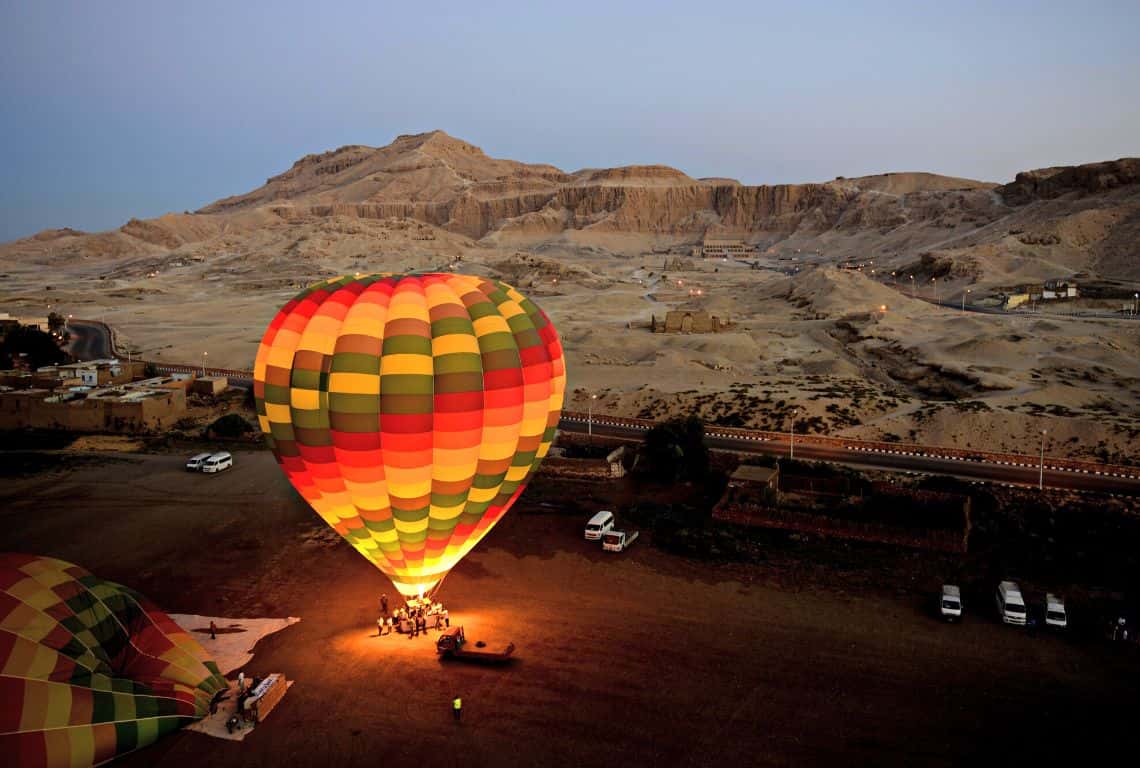
Sunrise Hot Air Balloon Ride Over Luxor / 7-Day Egypt Itinerary
Now, make sure to check out my post: Hot Air Balloon Ride Over Luxor – A Bucket List Experience to find out how to select a balloon company and ensure that you are booked for the morning flight. Also, find out how much it costs. And, finally, read how to have the best experience and check out my pictures and see why I loved it!
Valley of the Kings
Right after the sunrise hot air balloon ride, I returned to my cruise boat and my tour guide and a driver were already waiting for me to take me to the Valley of the Kings.
It took us about 15 minutes to reach the entrance to the Valley of the Kings.
Honestly, having a driver and a tour guide is the best option for visiting the Valley of the Kings. This option gives you total flexibility. You can decide how many tombs you are going to visit and which ones you might select.
By the way, the guides are not allowed inside the tombs. But, it is not the problem. My guide spent time with me before I entered each tomb. He highlighted the important facts about each of the Pharaohs and pointed out what to pay attention to. In addition, he had pictures of the inside areas of the tombs, so it made it easier for me to remember what I should pay close attention to once I entered the tomb.
What you need to know is that the Valley of the Kings is a valley nestled on the west bank of the River Nile at Luxor and for a period of nearly 500 years, from the 16th to the 11th century BC, known as the New Kingdom of Ancient Egypt, the Valley of the Kings was home to the tombs of the Pharaohs.
There are around 65 tombs that have been excavated in the Valley of the Kings so far. However, only 11 tombs in the Valley of the Kings are open to the public.
Although all the artifacts inside the tombs were looted a long time ago, you will be still amazed by the beautifully decorated walls and ceilings inside the tombs!
My recommendation is to visit at least the three tombs that are included in the general ticket: Ramses III, Ramses IV, and Tausert-Sethnakht.
However, you should splurge and buy one extra ticket and visit the tomb of Seti I which, in my opinion, unquestionably, is the most spectacular tomb in the Valley of the Kings.
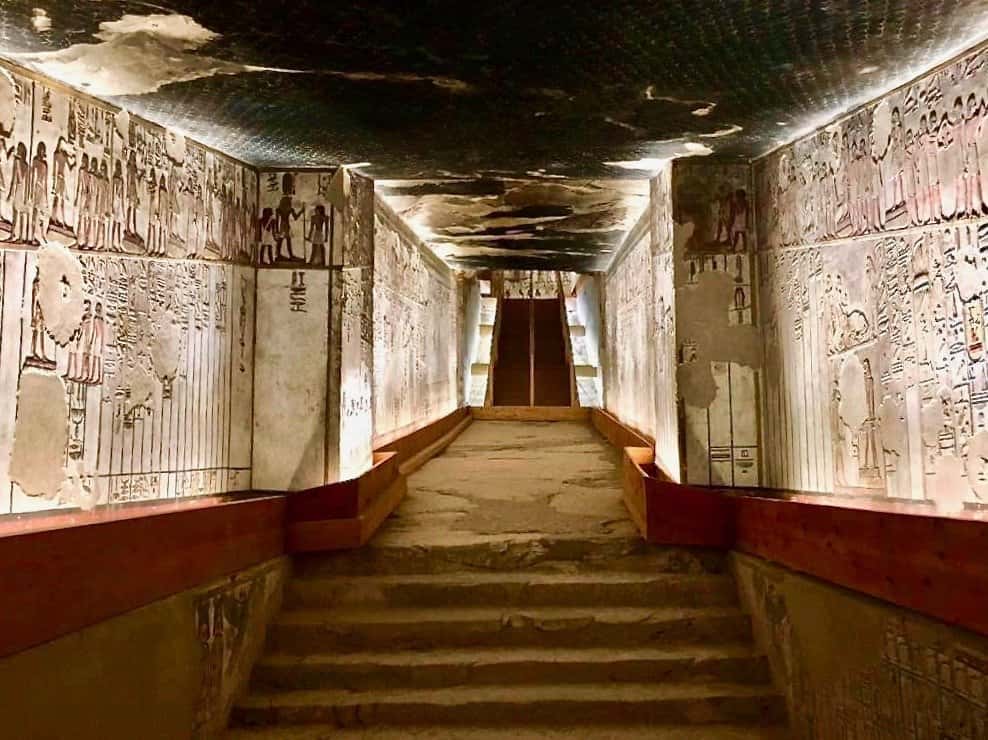
Tomb of Seti I in the Valley of the Kings / 7-Day Egypt Itinerary
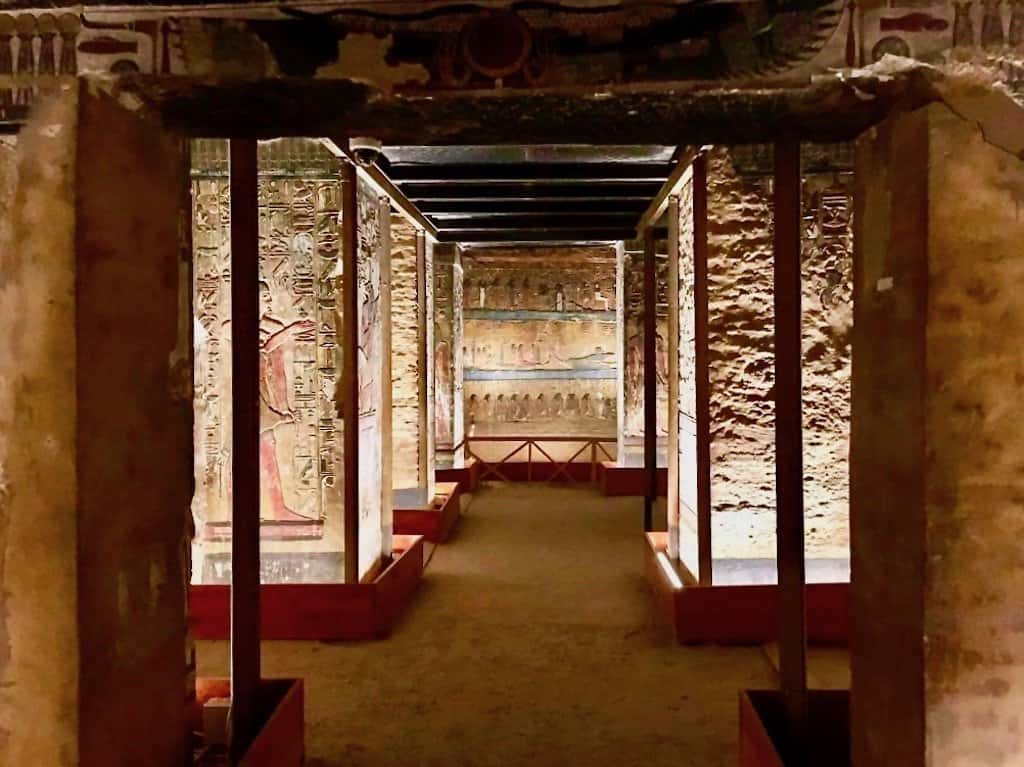
Tomb of Seti I in the Valley of the Kings / 7-Day Egypt Itinerary
Temple of Hatshepsut
Our next destination takes us to the awe-inspiring Temple of Hatshepsut, also recognized as Djeser-Djeseru translates to “Holy of Holies.”
This remarkable mortuary temple was commissioned by Pharaoh Hatshepsut and dedicated to both herself and the god Amun.
The Temple of Hatshepsut is ingeniously nestled into the face of a towering cliff and comprises a succession of terraces graced with columns, all connected by extensive ramps.
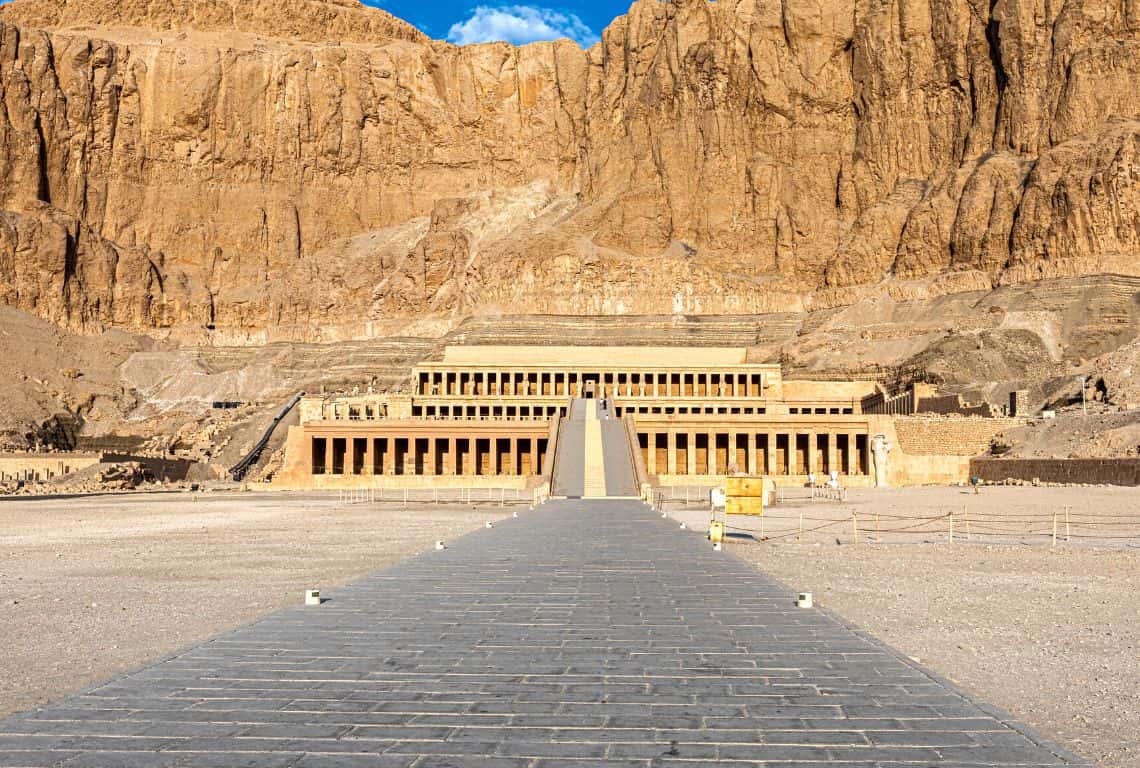
Temple of Hatshepsut / 7-Day Egypt Itinerary
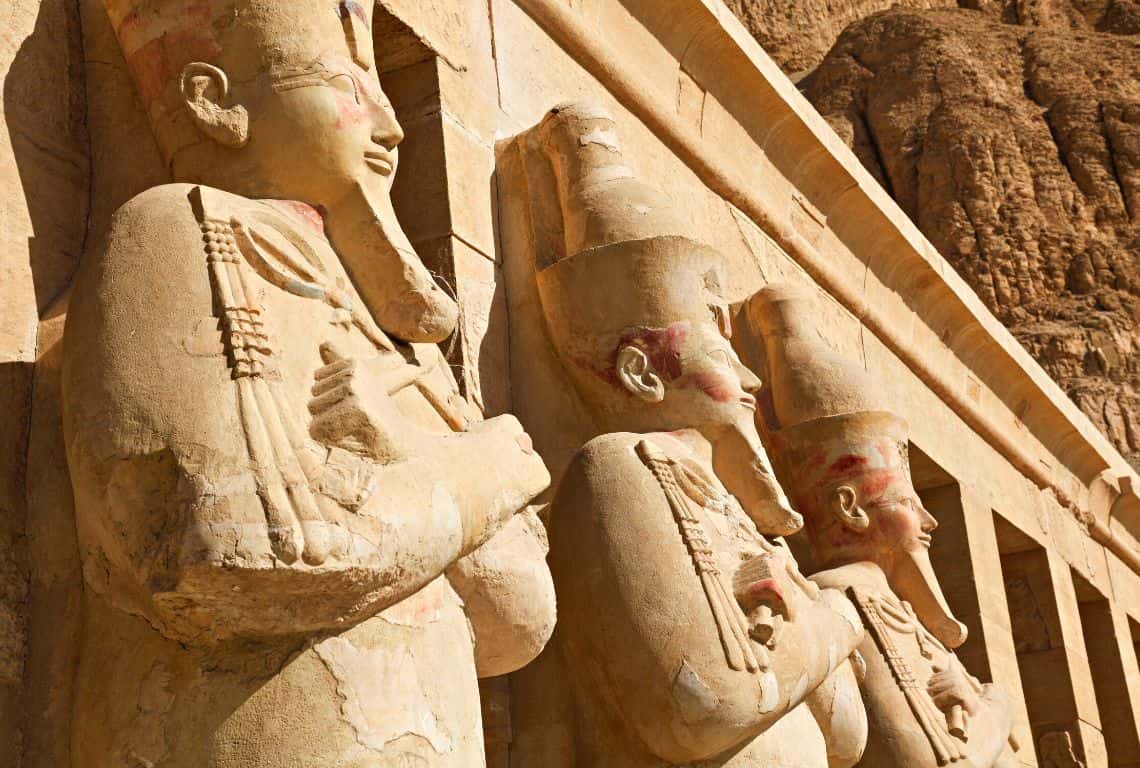
Temple of Hatshepsut / 7-Day Egypt Itinerary
The temple grounds sprawl expansively, offering a wealth of captivating sights to explore.
Among the must-see features, be sure not to overlook the Southern Colonnade, which showcases a compelling scene depicting the transportation of two obelisks by water. These obelisks were erected by Hatshepsut at the Karnak Temple, and this tableau provides a vivid glimpse into the engineering prowess of the era.
As you journey through, take a moment to pause at the Punt Colonnade, adorned with captivating scenes that recount Hatshepsut’s grand expedition to the Land of Punt.
These depictions offer insights into the ships that embarked on this significant voyage and provide a glimpse of the inhabitants of this distant and enigmatic land.
Colossi of Memnon
The final stop of the day is the Colossi of Memnon.
The Colossi of Memnon is a pair of giant statues made out of quartzite sandstone. Each statue stands about 18 meters high (65 feet) and depicts Amenhotep III, a pharaoh of the 18th Dynasty (the New Kingdom) who reigned during the 14the century BC.
Although they look as if they are standing randomly in the middle of nowhere, they actually used to guard the entrance of the first pylon of the Mortuary Temple of Amenhotep III.
The Mortuary Temple of Amenhotep III was one of the largest temples built in Egypt.
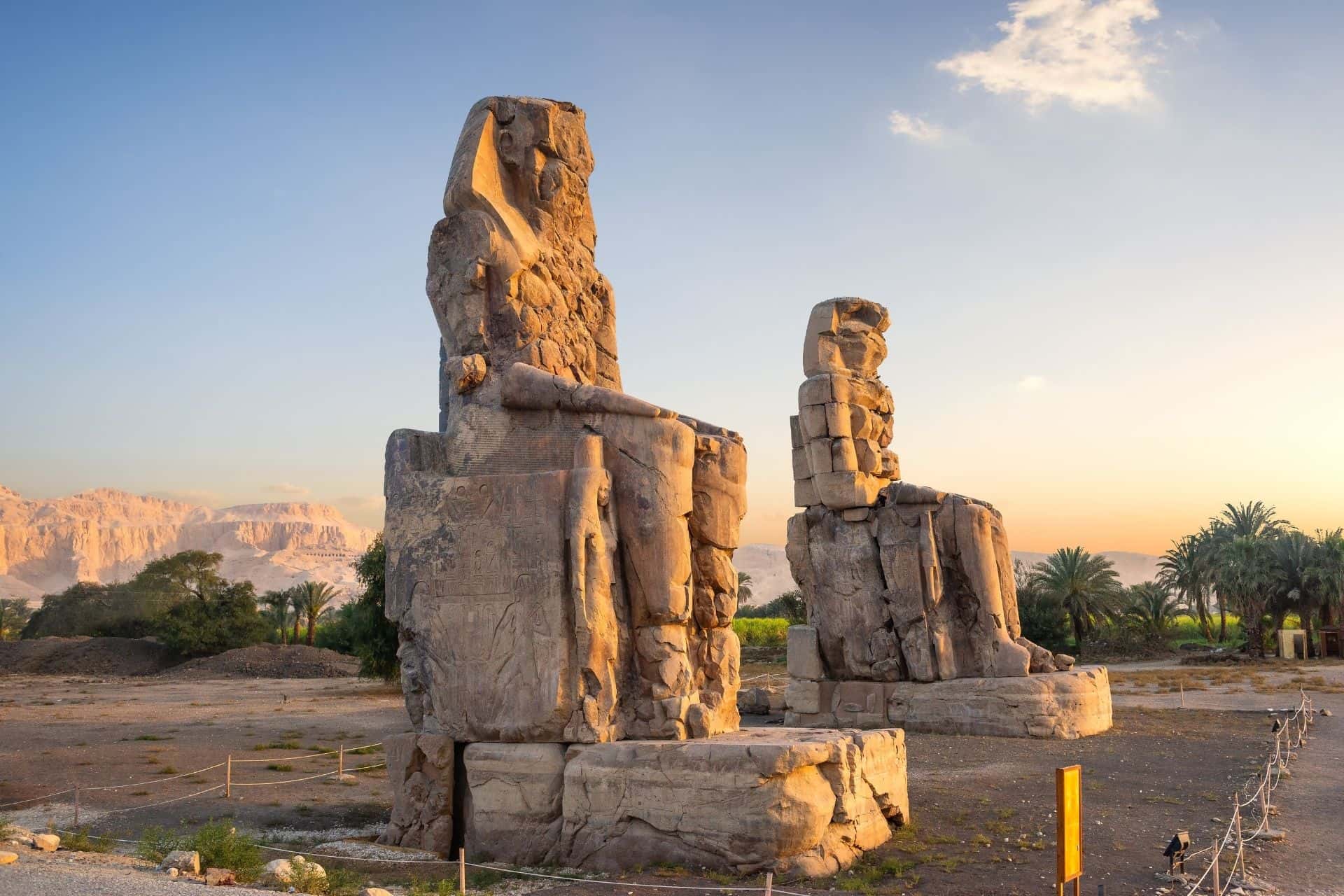
Colossi of Memnon / 7-Day Egypt Itinerary
Day 6 - Disembark River Nile Cruise, Check into Your Hotel, Luxor and Karnak Temples, Sound and Light Show at the Karnak Temple
Today marks the moment when you bid farewell to your River Nile Cruise and transition into the comforts of your Luxor hotel.
Your journey continues with a visit to the awe-inspiring Luxor and Karnak Temples, immersing yourself in the profound history and grandeur of these sacred sites.
To conclude this remarkable day, you will have the opportunity to partake in the mesmerizing Light and Sound Show at the Karnak Temple, an enchanting spectacle that brings ancient history to life through captivating illumination and narration.
Disembark River Nile Cruise and Check into Your Hotel
Where to stay in Luxor?
I stayed at Hilton Luxor Resort and Spa and I loved it and I am recommending it. The hotel is modern, spacious, beautifully decorated, and meticulously maintained. The hotel grounds are in pristine order.
I used the hotel spa and it was excellent. By the way, the use of spa facilities is complimentary. In addition, I had all my meals at the hotel. There were more choices for dining than I could manage to try.
Last but not least, make sure to head to the infinity pool overlooking the River Nile.
Luxor Temple
The Luxor Temple, situated on the East Bank of the River Nile in Luxor, stands as one of the most exquisite and captivating temples in this storied city.
The temple’s inception can be traced back to the reign of the illustrious Pharaoh Amenhotep III, a prominent builder of ancient Egypt.
Subsequently, a succession of rulers, including Pharaohs Tutankhamun, Horemheb, Merenptah, Seti I, Ramses III, Ramses IV, Ramses VI, and even the legendary Alexander the Great, left their indelible marks on the Luxor Temple with various enhancements and additions.
However, the most substantial expansion efforts were undertaken during the reign of another renowned builder of ancient Egypt, Ramses II.
The Luxor Temple, steeped in divine significance, was dedicated to the worship of Amon, the king of the gods, along with his consort Mut and their son Khons.
During your visit to the Luxor Temple, prepare to be enthralled by the resplendent Courtyard of Ramses II. Encircled by a double row of papyrus columns adorned with exquisite bud capitals, this courtyard boasts an array of imposing statues honoring Ramses II.
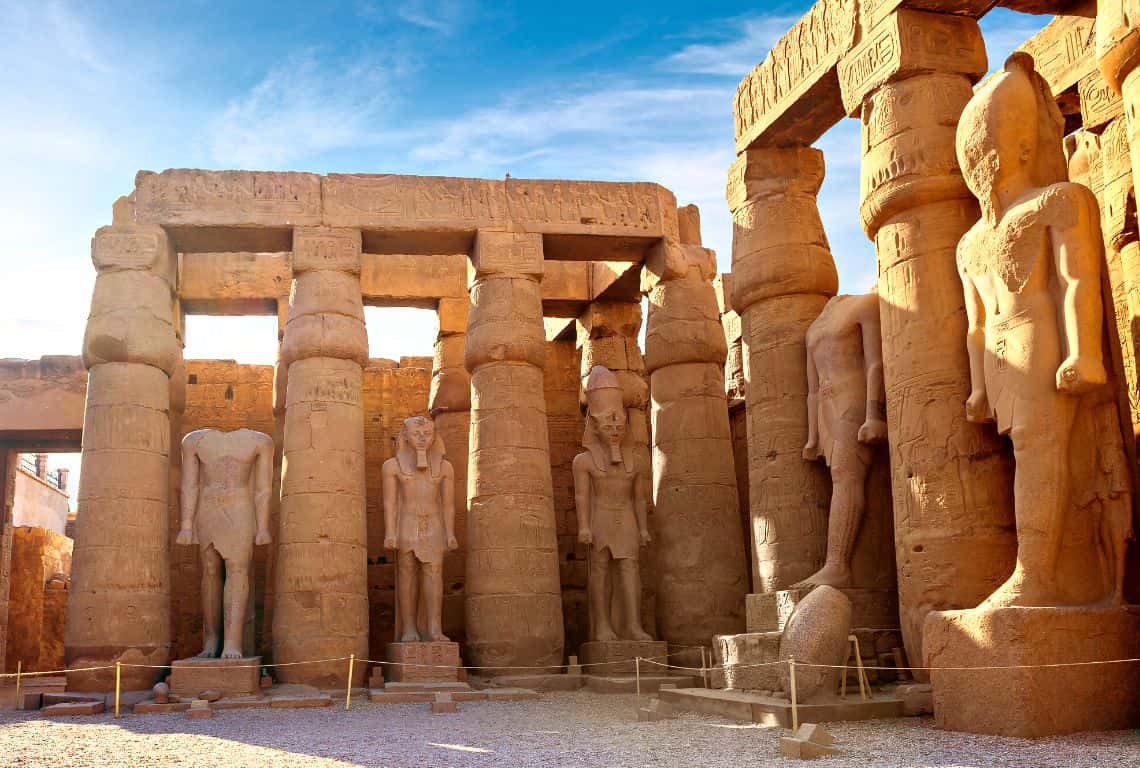
Luxor Temple / 7-Day Egypt Itinerary
Yet, it is the Colonnade of Amenhotep III that truly leaves visitors spellbound!
This extensive corridor is flanked by 14 columns, each crowned with open papyrus capitals.
It undeniably ranks among the most awe-inspiring features of the Luxor Temple, a testament to the architectural marvels of ancient Egypt.
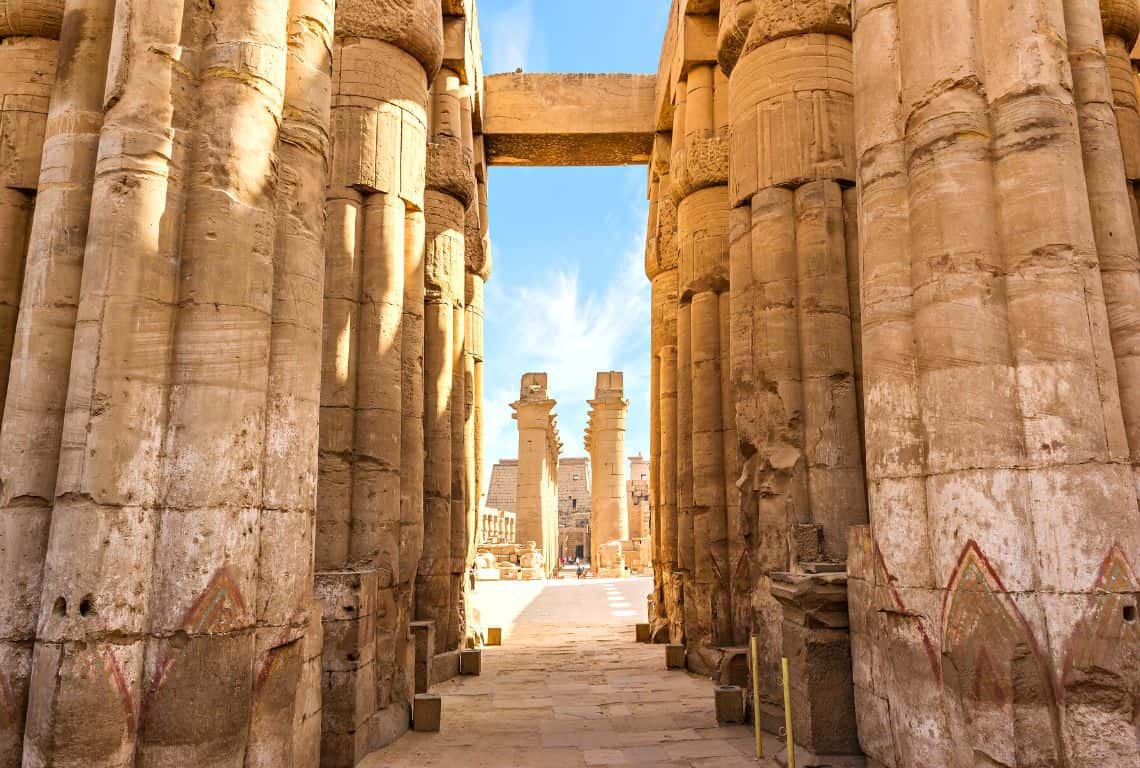
Luxor Temple / 7-Day Egypt Itinerary
Karnak Temple
Our next destination is the colossal Karnak Temple Complex, a testament to the enduring legacy of ancient Egypt.
From the inception of the 11th Dynasty onward, successive pharaohs embarked on a remarkable journey of reconstruction, expansion, restoration, and alteration of the existing structures within the Karnak Temple. Their ultimate aim was to etch their mark on Egypt’s most revered temple, a profound endeavor that they believed would secure their immortality.
At the core of the Karnak Temple Complex resides the Temple of Amun, a hallowed sanctuary dedicated to the supreme deity, the king of the gods. This central temple is enveloped by an array of smaller temples, chapels, and sanctuaries devoted to various other divine entities.
Furthermore, the complex boasts an array of grand halls, a sacred lake, imposing pylons, colossal statues, and majestic obelisks.
Your journey begins with an awe-inspiring stroll along the Avenue of the Criosphinxes, statues with the heads of rams, lining the processional way that leads to the heart of the Temple of Karnak.
Yet, for me, the zenith of the entire Karnak Temple tour was the Great Hypostyle Hall. Commissioned by Seti I and completed under the reign of Ramses II, this monumental hall spans an expansive 50,000 square feet. It features an astonishing array of 134 massive stone columns, each adorned with exquisite capitals.
The central aisle is flanked by seven rows, with nine columns gracing each row on both sides, each column soaring to a towering height of 10 meters. The grandeur of this hall stands as a testament to the architectural prowess and devotion of ancient Egypt, a sight that will undoubtedly leave you in awe.
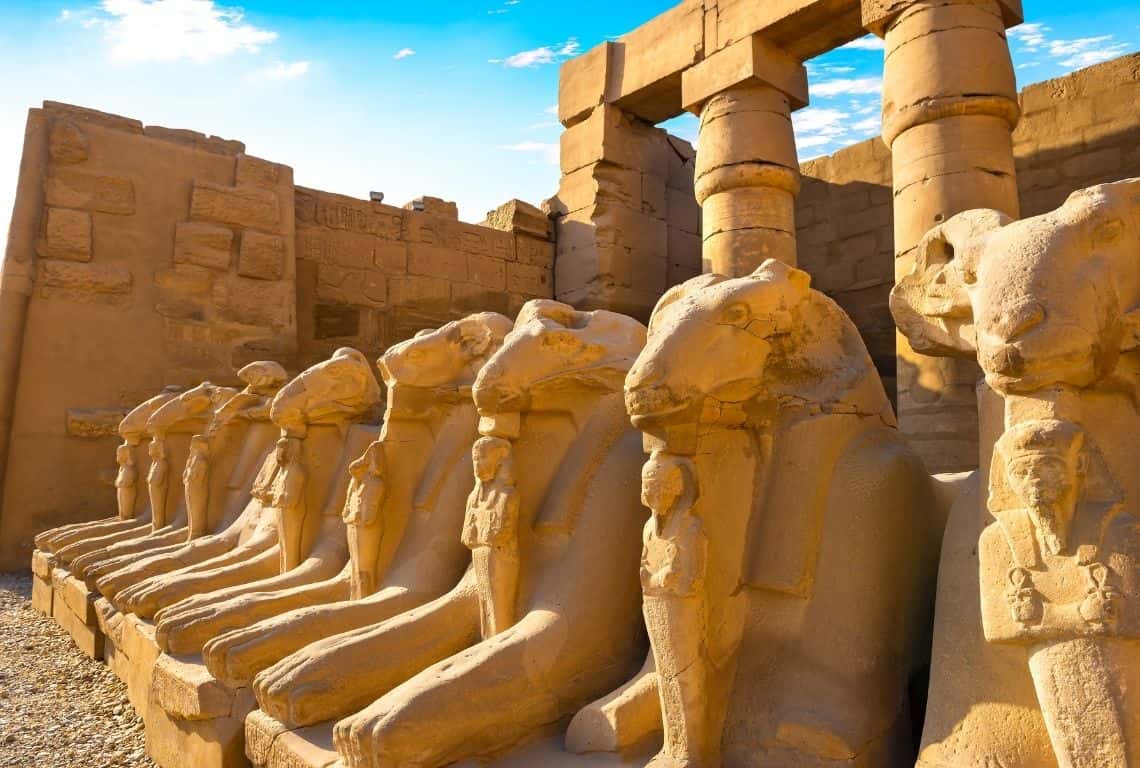
Karnak Temple / 7-Day Egypt Itinerary
Yet, for me, the zenith of the entire Karnak Temple tour was the Great Hypostyle Hall.
Commissioned by Seti I and completed under the reign of Ramses II, this monumental hall spans an expansive 50,000 square feet. It features an astonishing array of 134 massive stone columns, each adorned with exquisite capitals.
The central aisle is flanked by seven rows, with nine columns gracing each row on both sides, each column soaring to a towering height of 10 meters. The grandeur of this hall stands as a testament to the architectural prowess and devotion of ancient Egypt, a sight that will undoubtedly leave you in awe.
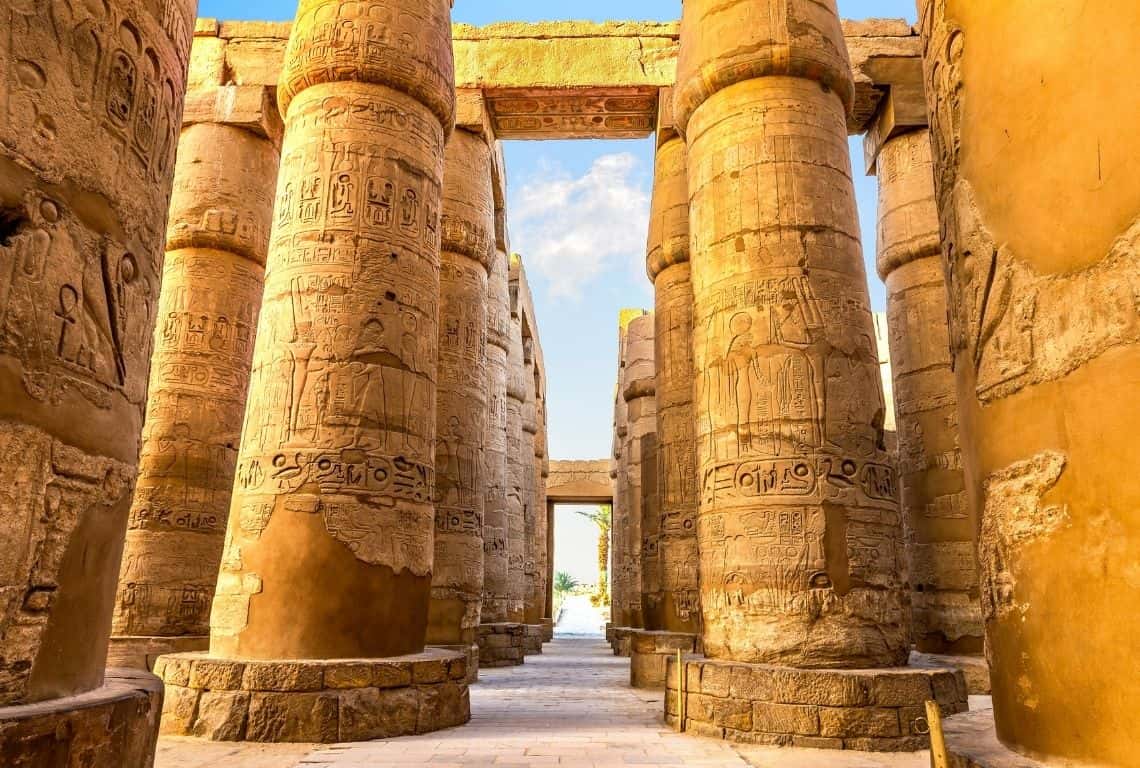
Karnak Temple / 7-Day Egypt Itinerary
Sound and Light Show at the Karnak Temple
What a great way to finish off your day with the Sound and Light Show at the Karnak Temple!
The show goes on for about an hour and a half and recounts the history of Thebes (Luxor) and covers the lives of several pharaohs who contributed to the construction of the temple complex.
However, the entrance ticket allows you to see the temple complex beautifully illuminated. And, that is why you must go! You will be amazed at how incredible the temple complex looks at night with the structures and statues lit up.
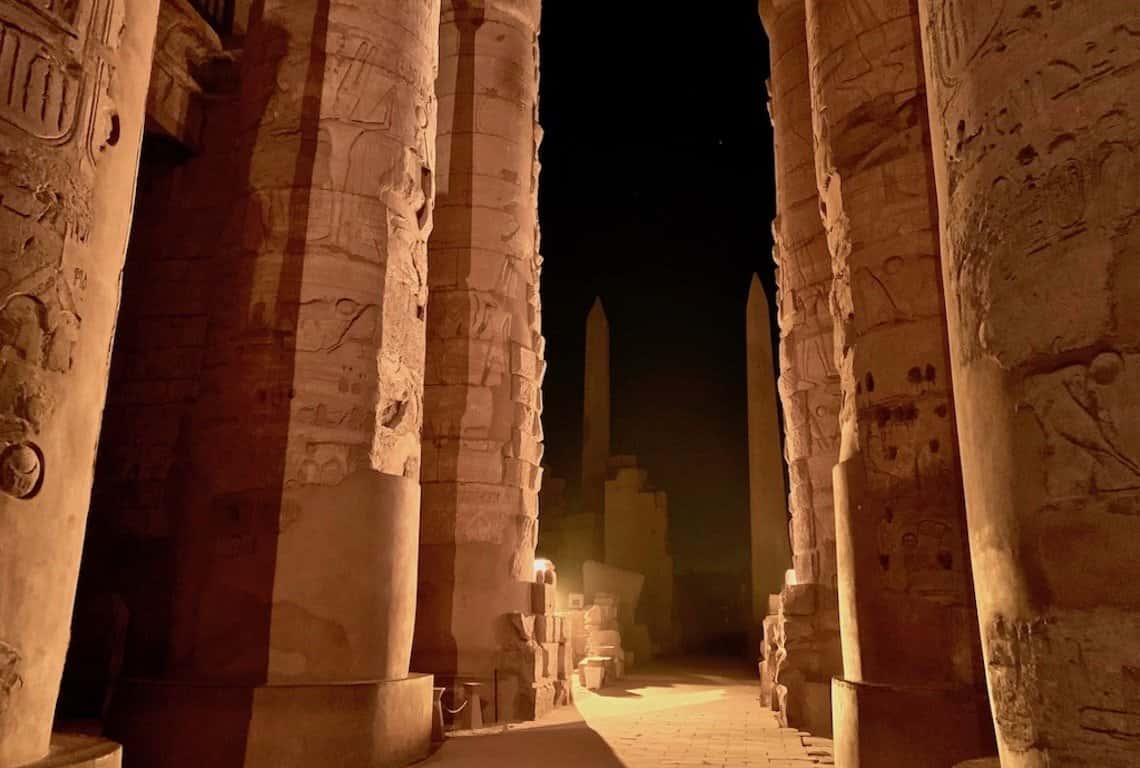
Karnak Temple / 7-Day Egypt Itinerary
Day 7 - Flight Back to Cairo, Islamic and Coptic Cairo, Egyptian Museum, Khan el-Khalili Bazaar, Flight Back Home
Today marks the final day of your immersive 7-day Egypt itinerary. You will begin by checking out of your Luxor hotel and catching an early flight to Cairo.
Upon arriving in Cairo, your day unfolds with an enthralling exploration of Islamic and Coptic Cairo, where you will delve into the rich tapestry of history and culture that these neighborhoods offer.
Your journey continues with a visit to the renowned Egyptian Museum, home to an incredible collection of artifacts from Egypt’s storied past.
Finally, you will conclude your day with a leisurely stroll through the bustling Khan el-Khalili Bazaar, where vibrant market scenes and a plethora of treasures await.
While most international flights depart from Cairo late at night, if your flight is scheduled for the following day, I recommend considering a stay at Le Méridien Cairo Airport.
This conveniently located hotel is seamlessly connected to Terminal 3 of the airport via a walkway, ensuring a stress-free and efficient transition to your departure, just a short 15-minute walk away.
Islamic and Coptic Cairo
I took an early flight from Luxor to Cairo. The flight was just about 1 hour long. When I landed, my tour guide was waiting for me right at the gate. He quickly escorted me to the waiting car with a driver, and we were off to explore Islamic and Coptic Cairo.
My recommendation is to start your tour of Islamic and Copic Cairo at Salah El Din Citadel. It is one of Cairo’s main landmarks situated in the heart of medieval Cairo and encompasses hilltop battlements and a bastion begun by Salah El Din in 1176 AD.
After that visit Mohamed Ali Mosque, which was constructed between 1830 and 1848 by Egypt’s first modernizing ruler, Mohamed Ali Pasha.
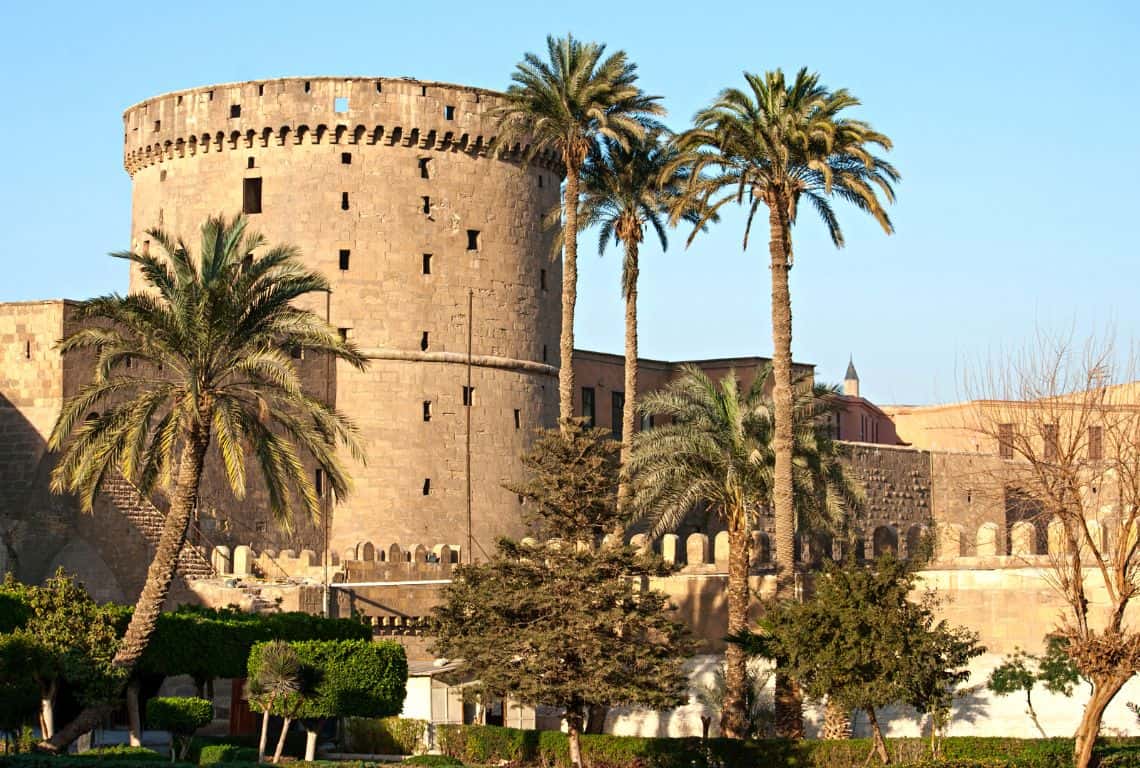
Salah El Din Citadel / 7-Day Egypt Itinerary
Next visit the oldest of Cairo’s Coptic churches: the Hanging Church, Ben Ezra Synagogue, and Church of Abu Serga.
Of all the places that I have visited on an Islamic and Coptic tour of Cairo, I have been the most impressed by the architecture of the Hanging Church.
The Hanging Church is also referred to as the Suspended Church or Al-Moallaqa. It is called the Hanging Church because it was built on the southern gate of the Roman Fortress. The wooden roof is in the shape of Noah’s ark.
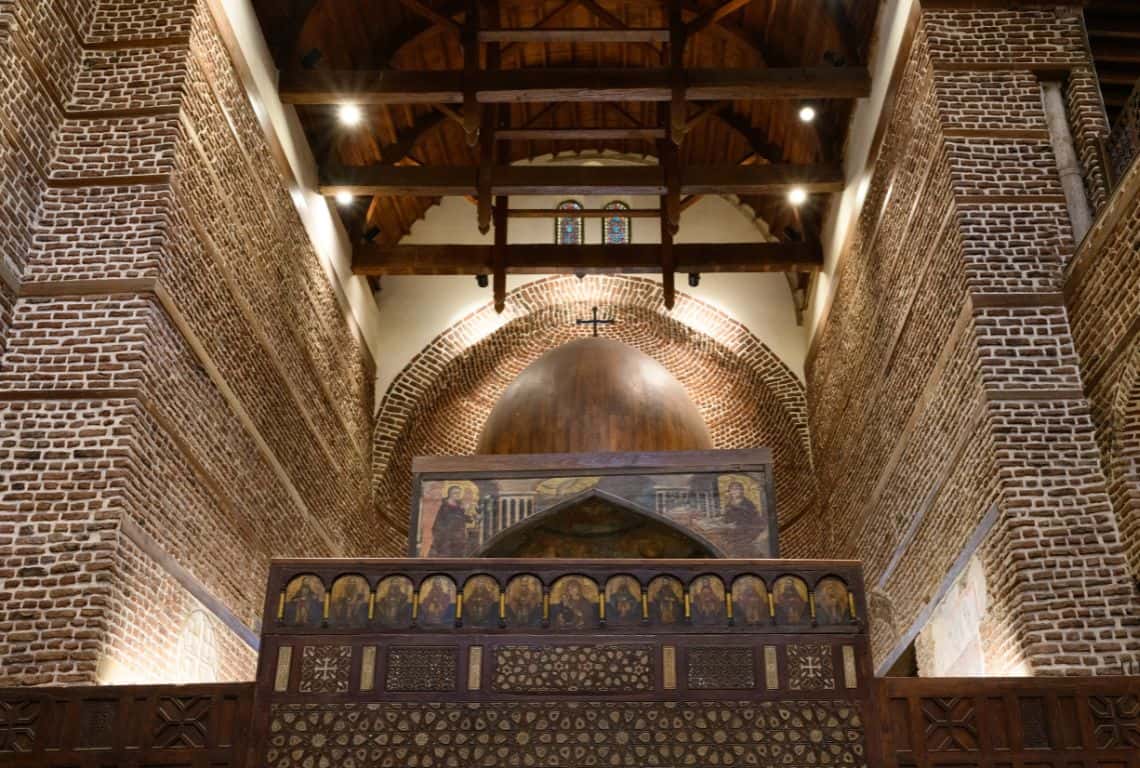
The Hanging Church / 7-Day Egypt Itinerary
Egyptian Museum
Next, we are heading to the Egyptian Museum.
I have to admit that the visit to the Egyptian Museum in Cairo is simply overwhelming! The Museum houses the world’s largest collection of Pharaonic antiquities consisting of more than 120,000 items (with a representative amount on display and the remainder in storerooms). To see it all, would take you days!
However, I honestly have to say, the visit to the Egyptian Museum was the highlight of the Cairo tour.
My recommendation is to focus just on King Tut’s Rooms. The most famous item is the gold mask of the 18th-dynasty Pharaoh Tutankhamen. It was discovered by Howard Carter in 1925 in tomb KV62 in the Valley of the Kings.
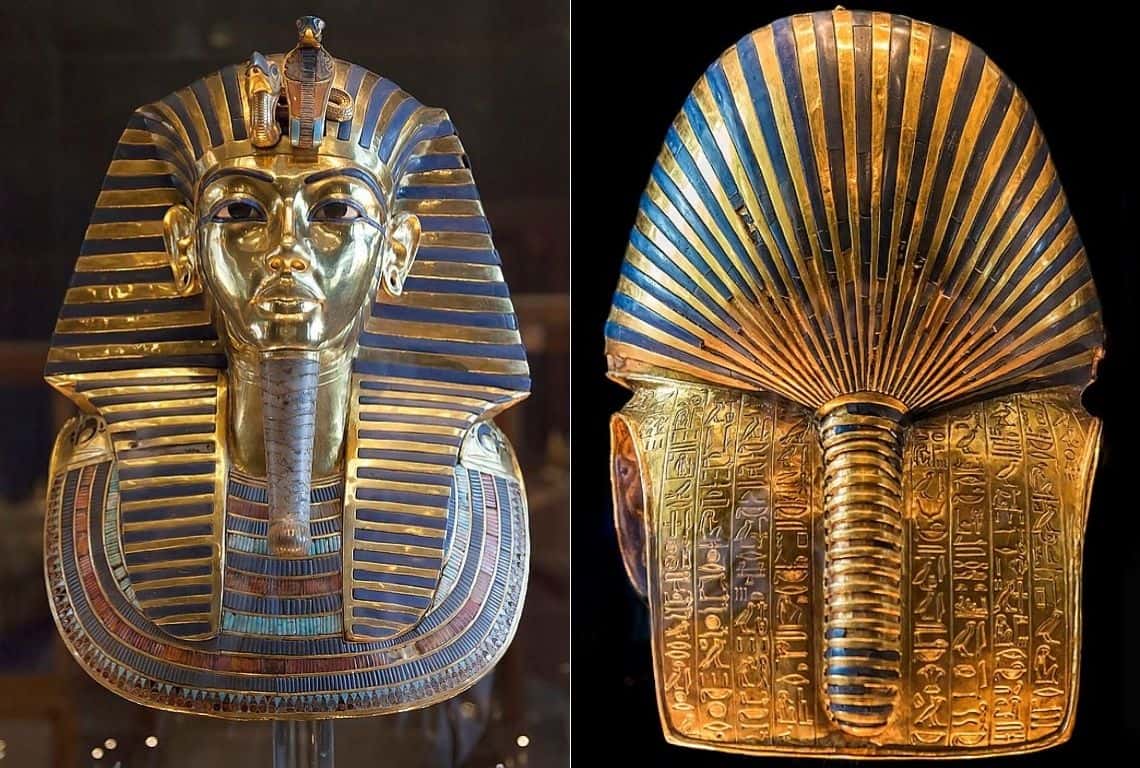
The mask is made from two layers of high-karat gold. It weighs 10.23 kg (22.6 lb). At the time of my visit, photography was not allowed in King Tut’s Room. Image Source: Wikimedia Commons – front of the mask, Wikimedia Commons – back of the mask.
One of the most amazing items in the Egyptian Museum and part of King Tut’s Rooms is the gold chest that contained four canopic jars.
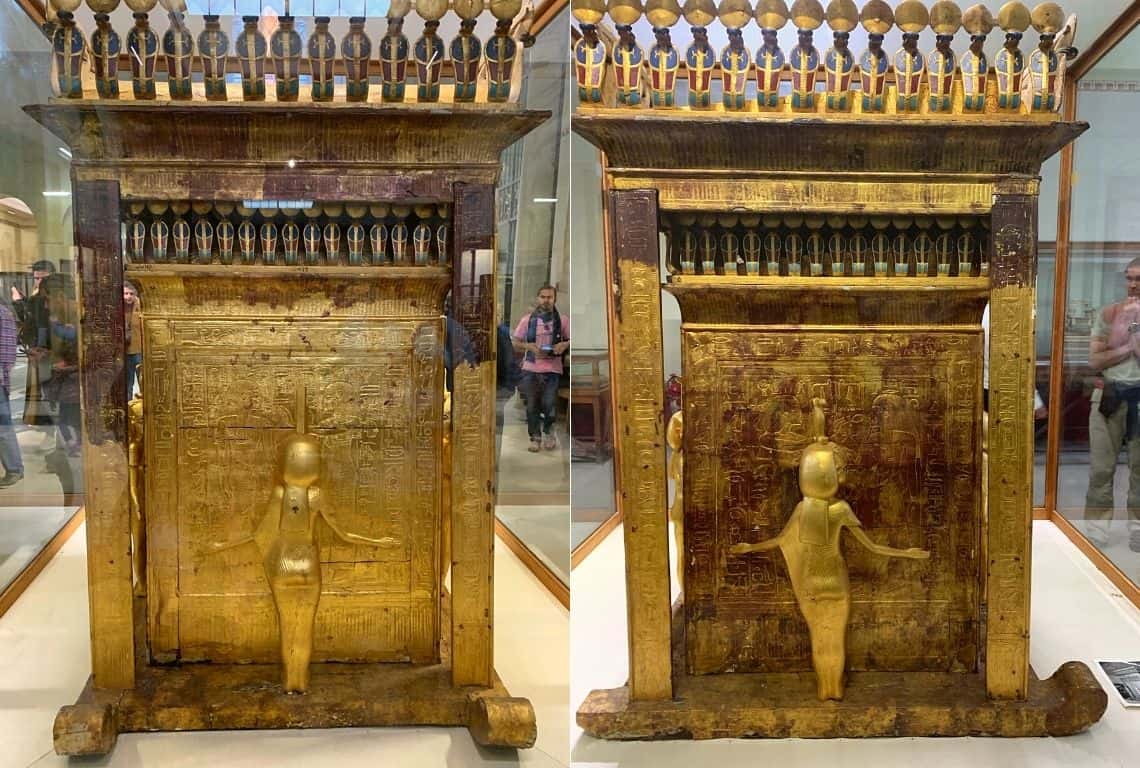
The Egyptian Museum in Cairo / 7-Day Egypt Itinerary
Khan el-Khalili Bazaar
Our next stop takes us to the captivating Khan el-Khalili Bazaar, an indisputable must-visit when exploring Cairo. A journey through Khan el-Khalili is an essential Cairo experience that promises an awesome adventure!
Within this labyrinth of winding alleyways, you will encounter a kaleidoscope of market scenes, including spice and perfume vendors, antique and fabric shops, and a multitude of carpet merchants. Additionally, a plethora of stands offer an array of souvenirs, providing the perfect opportunity to hone your bargaining skills.
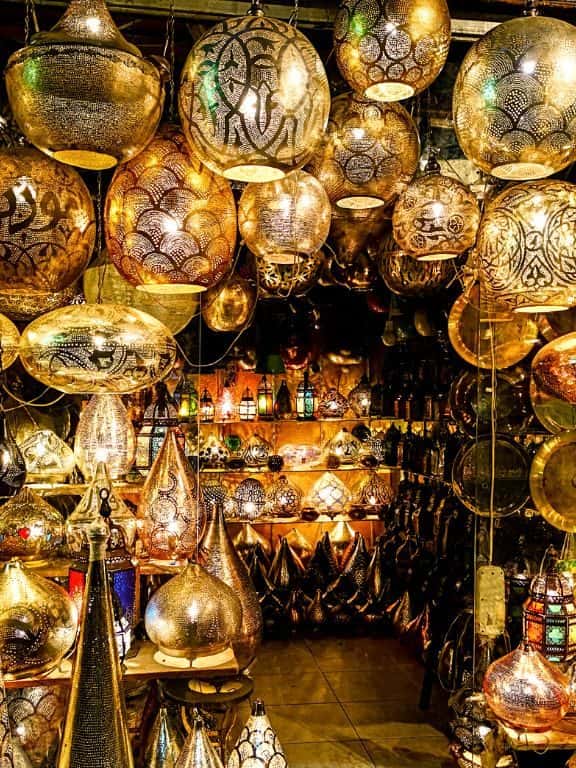
Khan el-Khalili Bazaar / 7-Day Egypt Itinerary
Yet, what truly sets Khan el-Khalili apart is the enchanting ambiance that envelopes you, transporting you back in time.
This historic bazaar, a UNESCO World Heritage site, traces its origins to 1382 when it was commissioned by the Emir Djaharks el-Khalili, the Master of the Stables of Sultan Barquq (1382-1389).
Djaharks el-Khalili undertook the ambitious project of demolishing the Fatimid family mausoleum, replacing it with a sprawling khan (caravansary), which subsequently became known as Khan al-Khalili.
It now stands as a testament to centuries of commerce and culture, making it one of the world’s most storied and historic places.
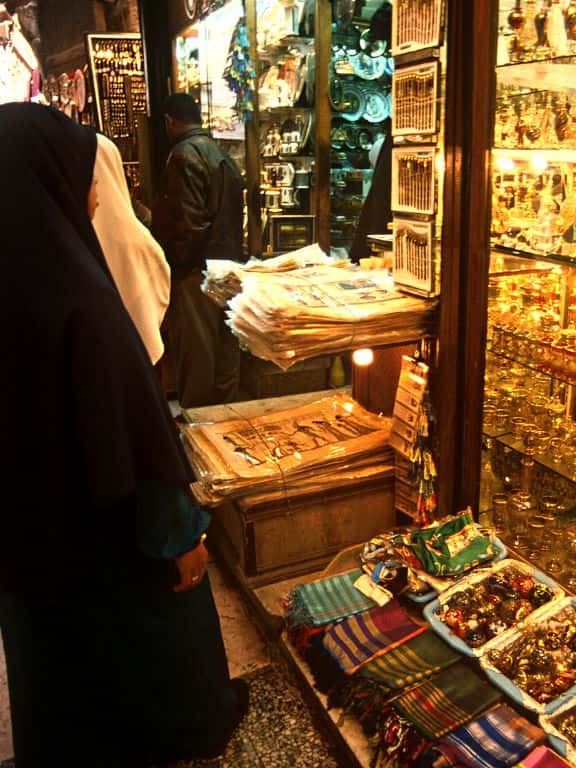
Khan el-Khalili Bazaar / 7-Day Egypt Itinerary
Fly Back Home
With this, your one-week Egypt Itinerary comes to a close. However, if you find yourself with additional time to explore Cairo, I highly recommend embarking on a day trip to Dashur!
Dahshur is a regal necropolis renowned for its two remarkable pyramids: the Bent Pyramid and the Red Pyramid. These pyramids hold the distinction of being among the oldest, largest, and best-preserved in all of Egypt, offering an opportunity to delve deeper into the ancient wonders of this storied land.
Intrepid Scout's Tips for 7-Day Egypt Itinerary
- Get your e-Visa before traveling to Egypt. Apply and get your visa to Egypt online. It is a simple process to apply online and it will save you time when you arrive in Egypt.
- The best time of the year to visit Egypt is during the winter months. The temperatures are mild and perfect for exploring Egypt.
- Book the Nile river cruise! The Nile river cruise is still one of the most popular ways to see Egypt’s ancient sights. Many of the most famous sites are located directly on the river. At night, many of the temples and monuments are beautifully illuminated, and the sight of them from the water is stunning.
You Might Also Like:
How to Visit and What to See at KHAN EL-KHALILI BAZAAR in Cairo
Perfect 7-Day Egypt Itinerary for First Visit (Cairo, Aswan, Luxor, Abu Simbel)
What to See at the TEMPLE of HORUS at EDFU (5 Things You Can’t Miss)
What to See at the TEMPLE of KOM OMBO, Egypt (9 Things You Can’t Miss)
How to Visit Abu Simbel: Everything You Need to Know to Plan Your Visit
How to Visit and What to See at the TEMPLE of PHILAE in Aswan
Best Day Trip from Cairo – Dahshur, Memphis, and Saqqara (Maps+Photos)
19 Must-See Things at Egyptian Museum in Cairo (+Practical Tips)
Don't Have Time To Read it Now?
Why Not Save 7-Day Egypt Itinerary to Your Pinterest Board!
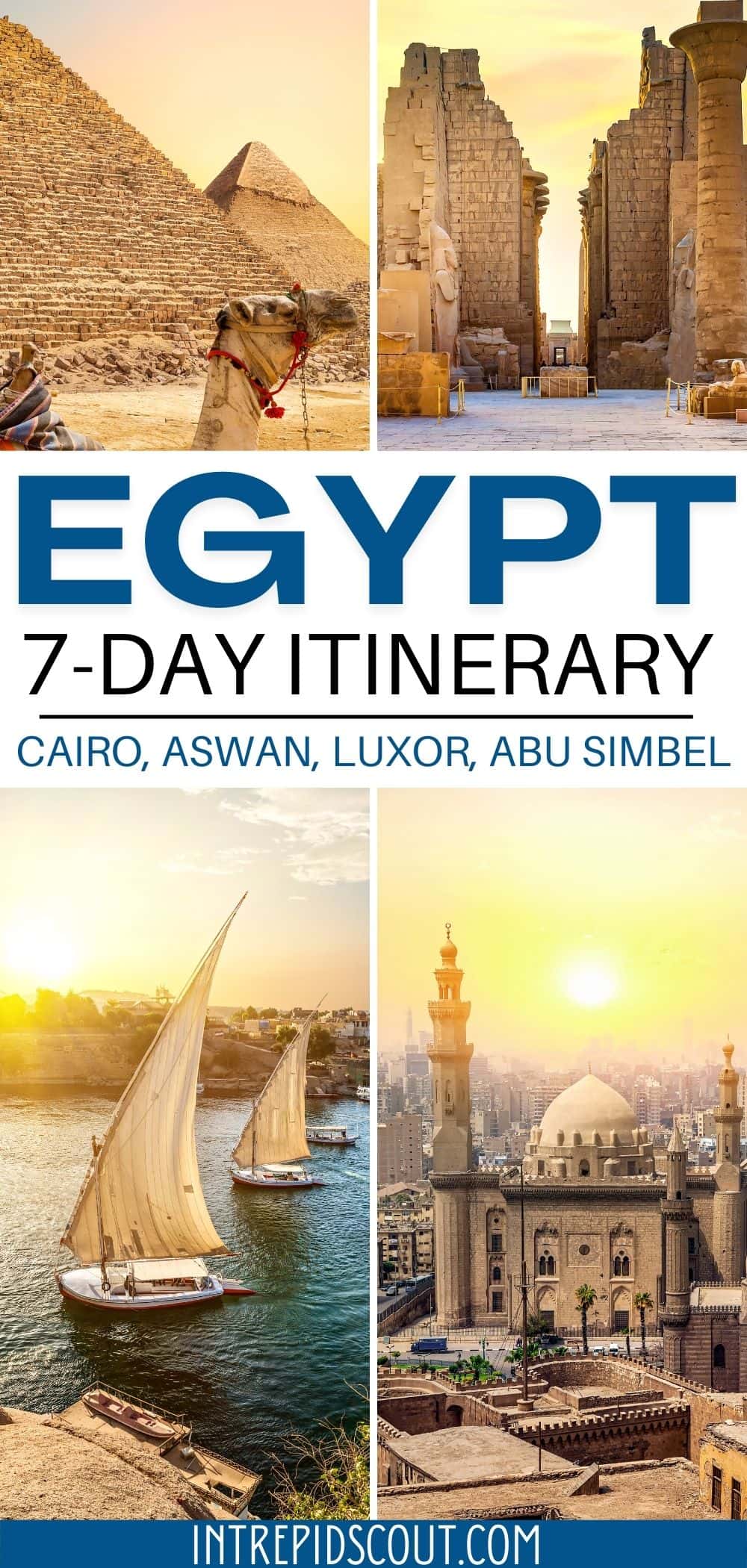
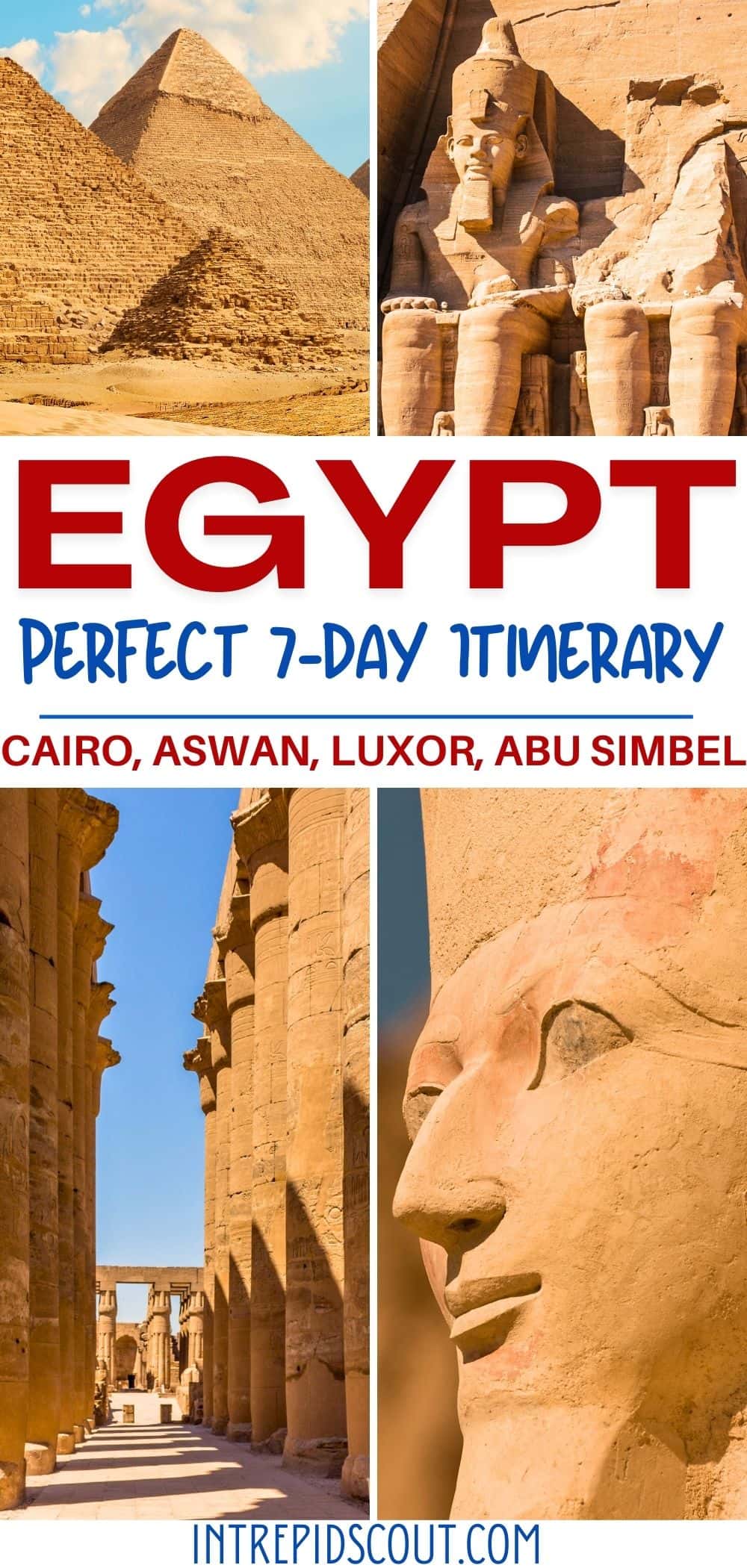
Now, It Is Your Turn, I Would Like to Hear Back from You!
Are you planning your trip to Egypt?
Please let me know! Drop me a quick comment right below!
Click on any of the images below to get inspired and to help you with the planning process for your trip to Egypt!
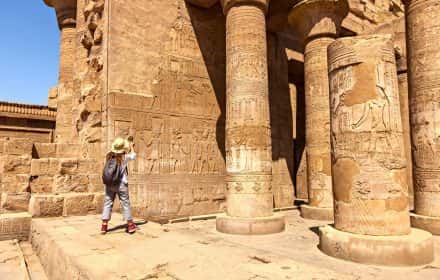
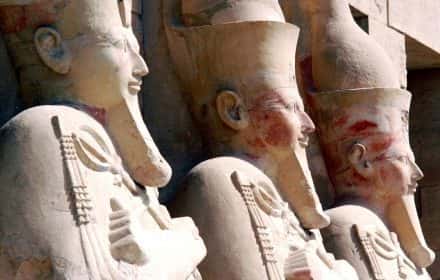
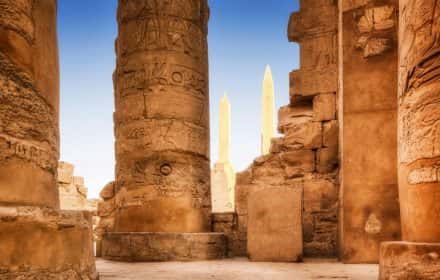
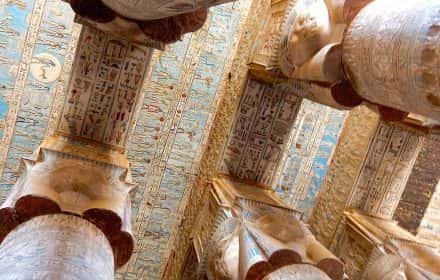
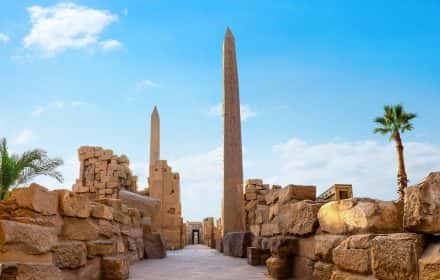
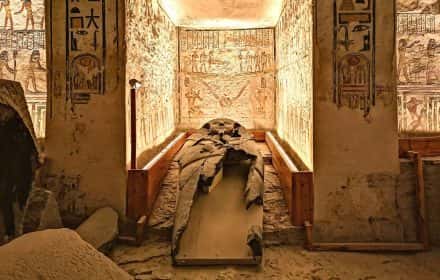
Comments:
2 thoughts on “Perfect 7-Day Egypt Itinerary (Cairo, Memphis, Saqqara, Giza, Aswan, Luxor, Abu Simbel)”
What tour companies or travel agencies did you use in Egypt?
Make sure to review my post on travel to Egypt. It will answer your questions: https://www.intrepidscout.com/egypt-travel-tips/